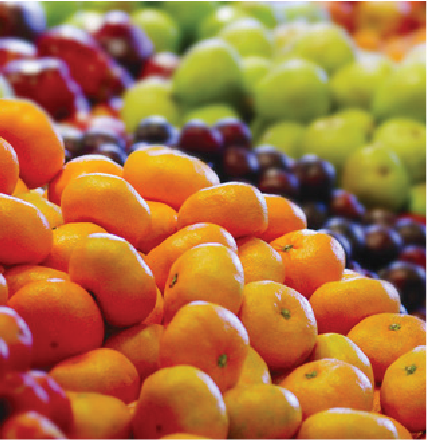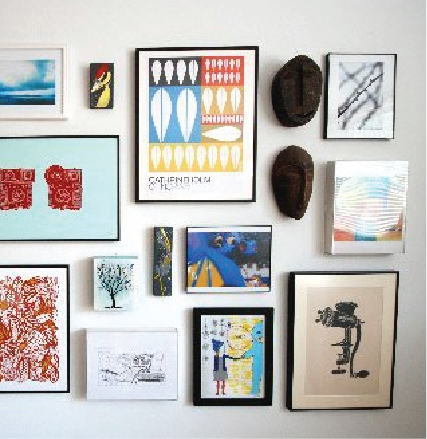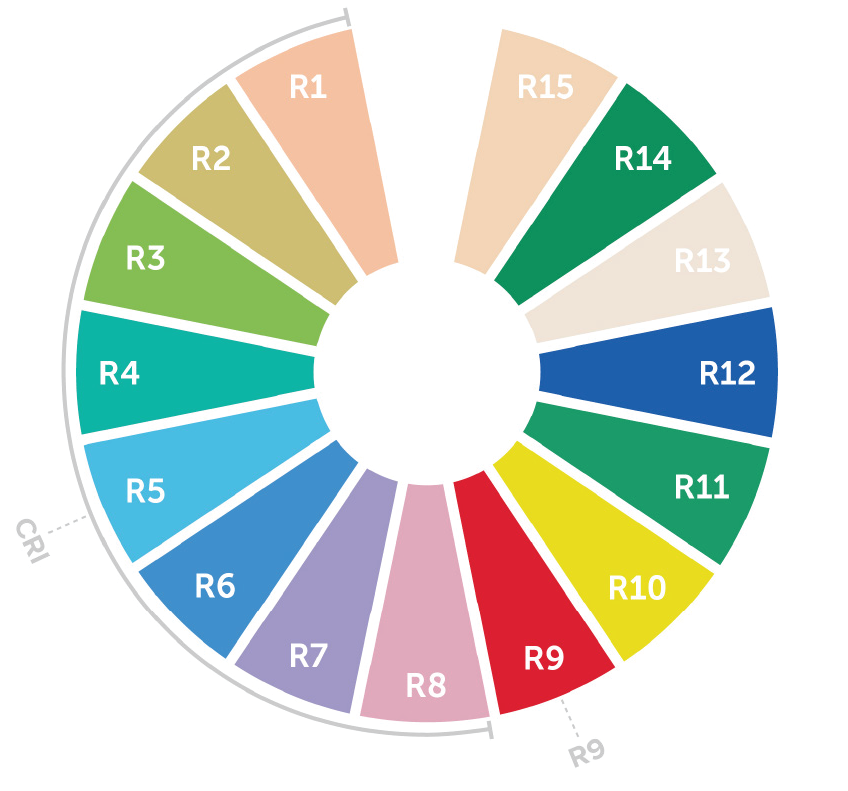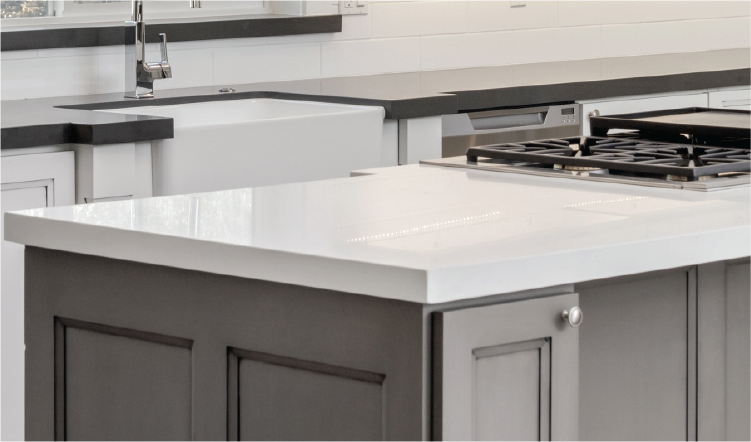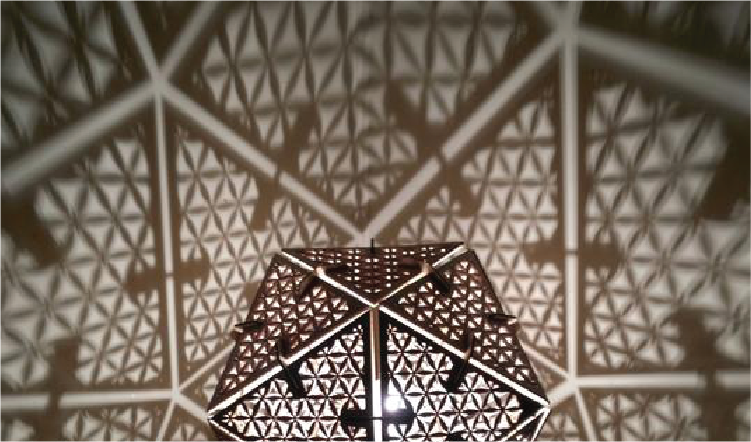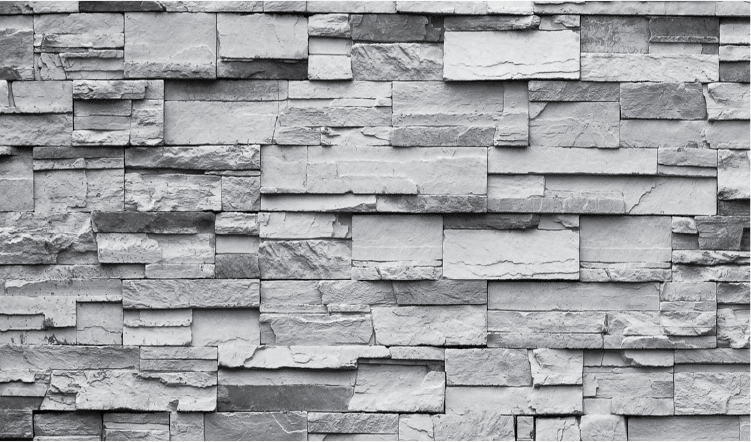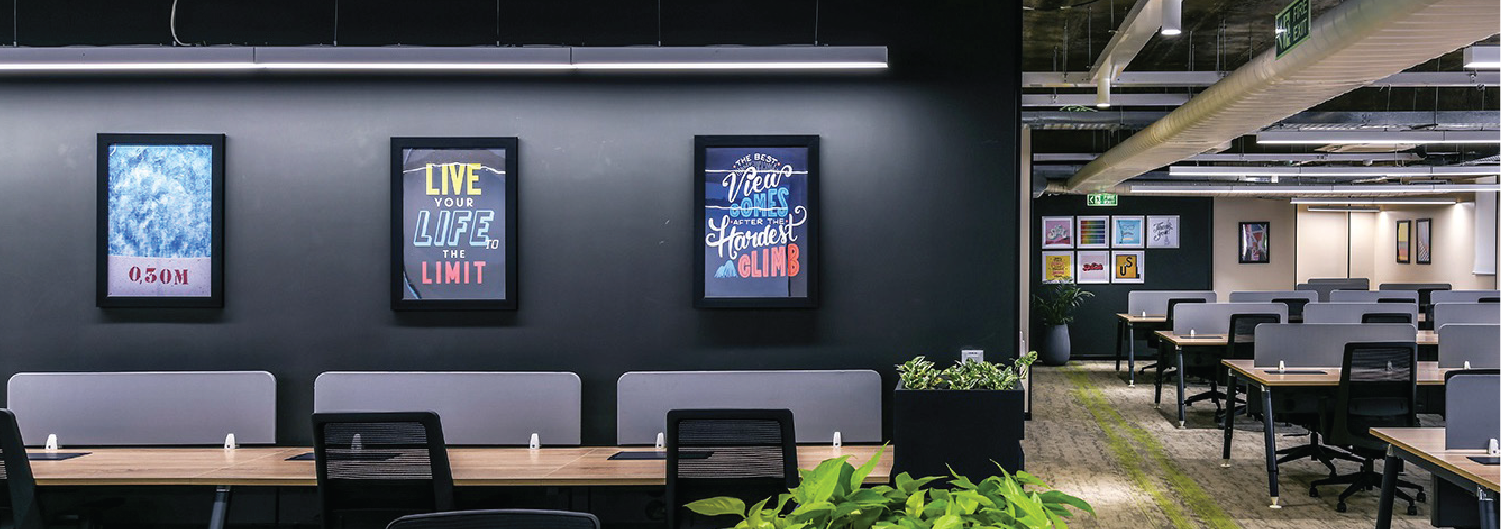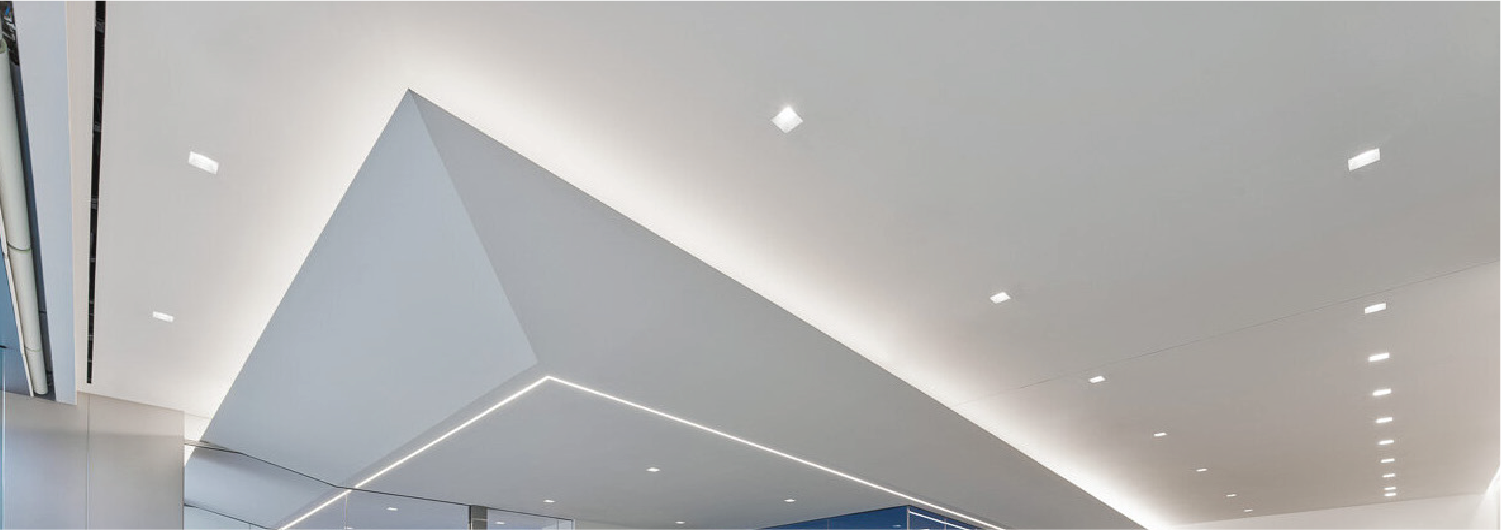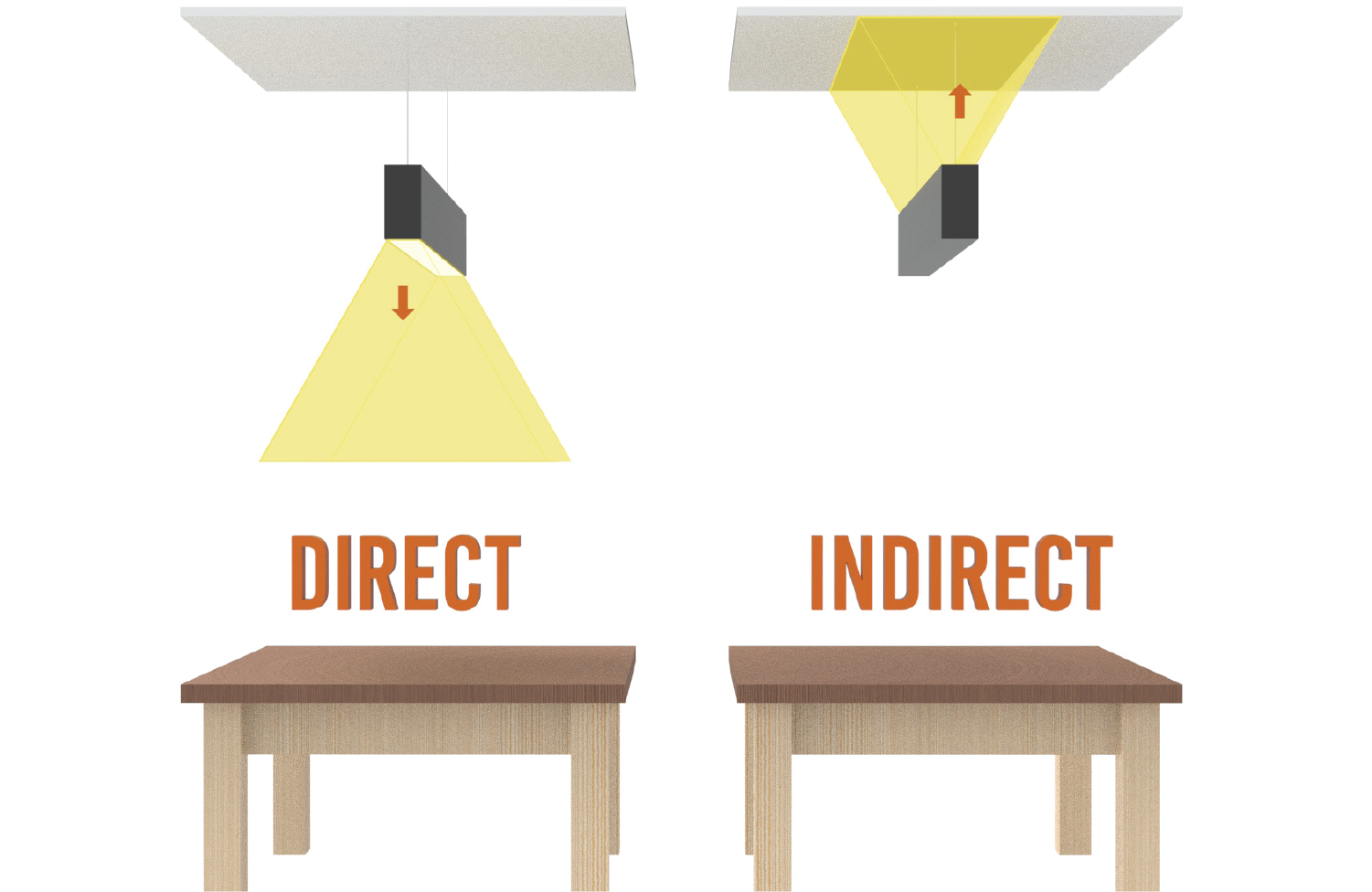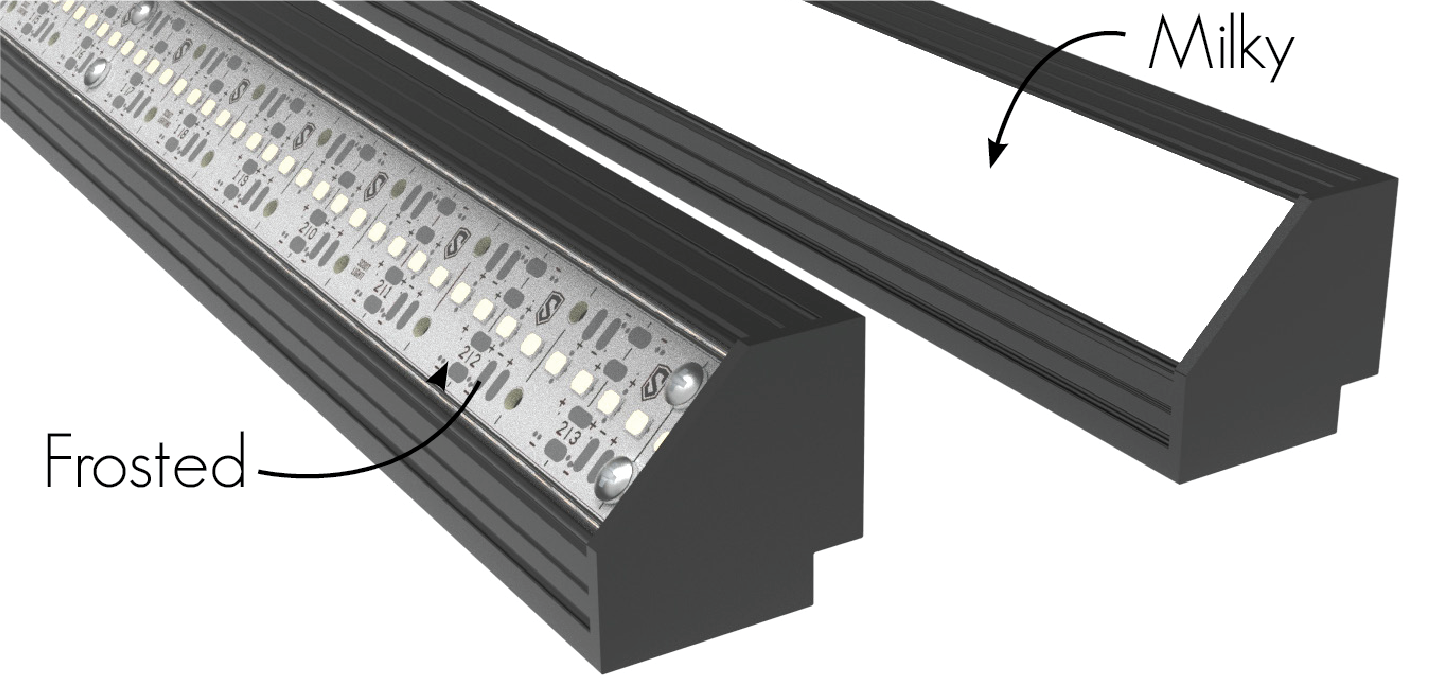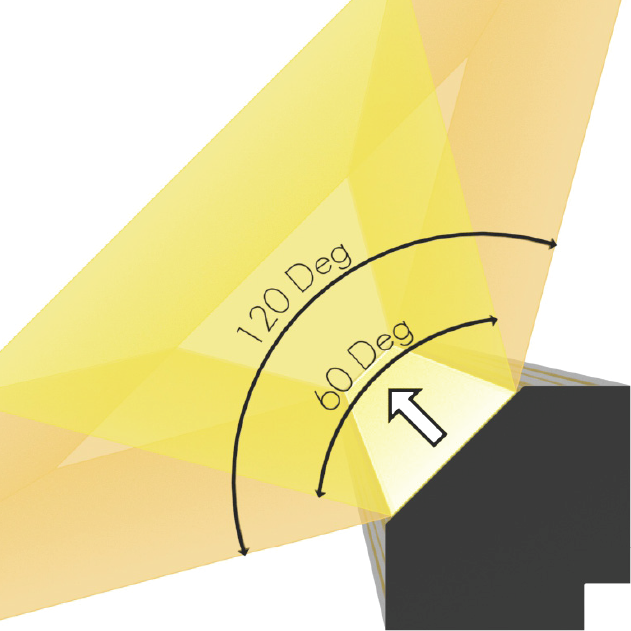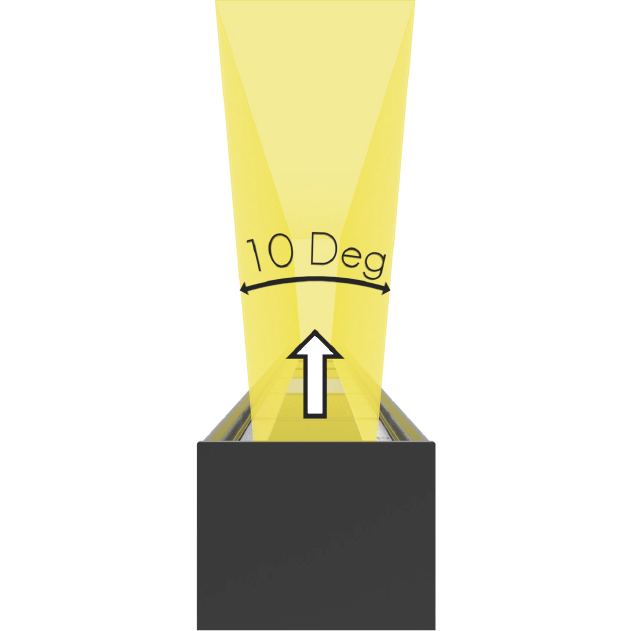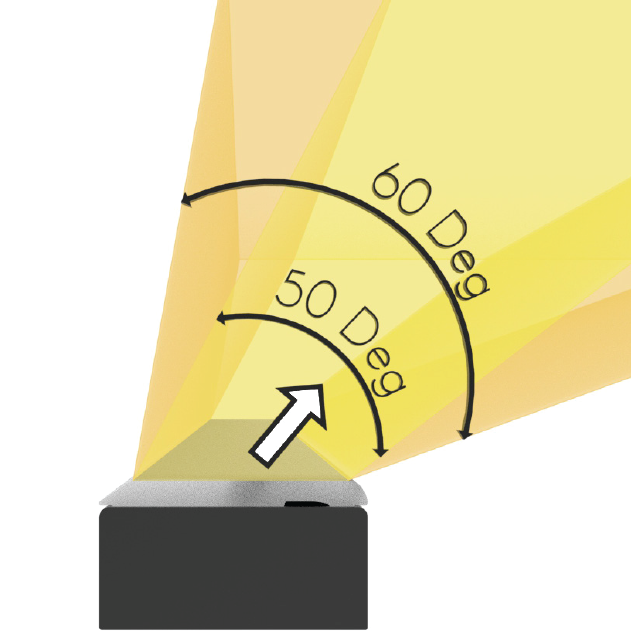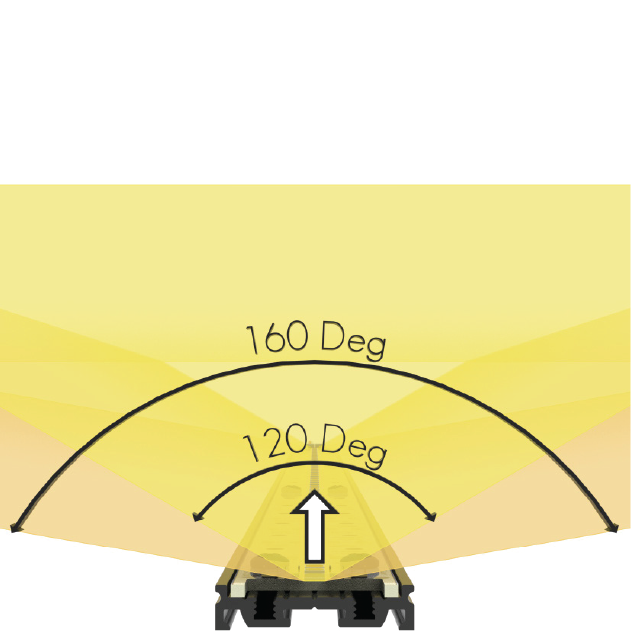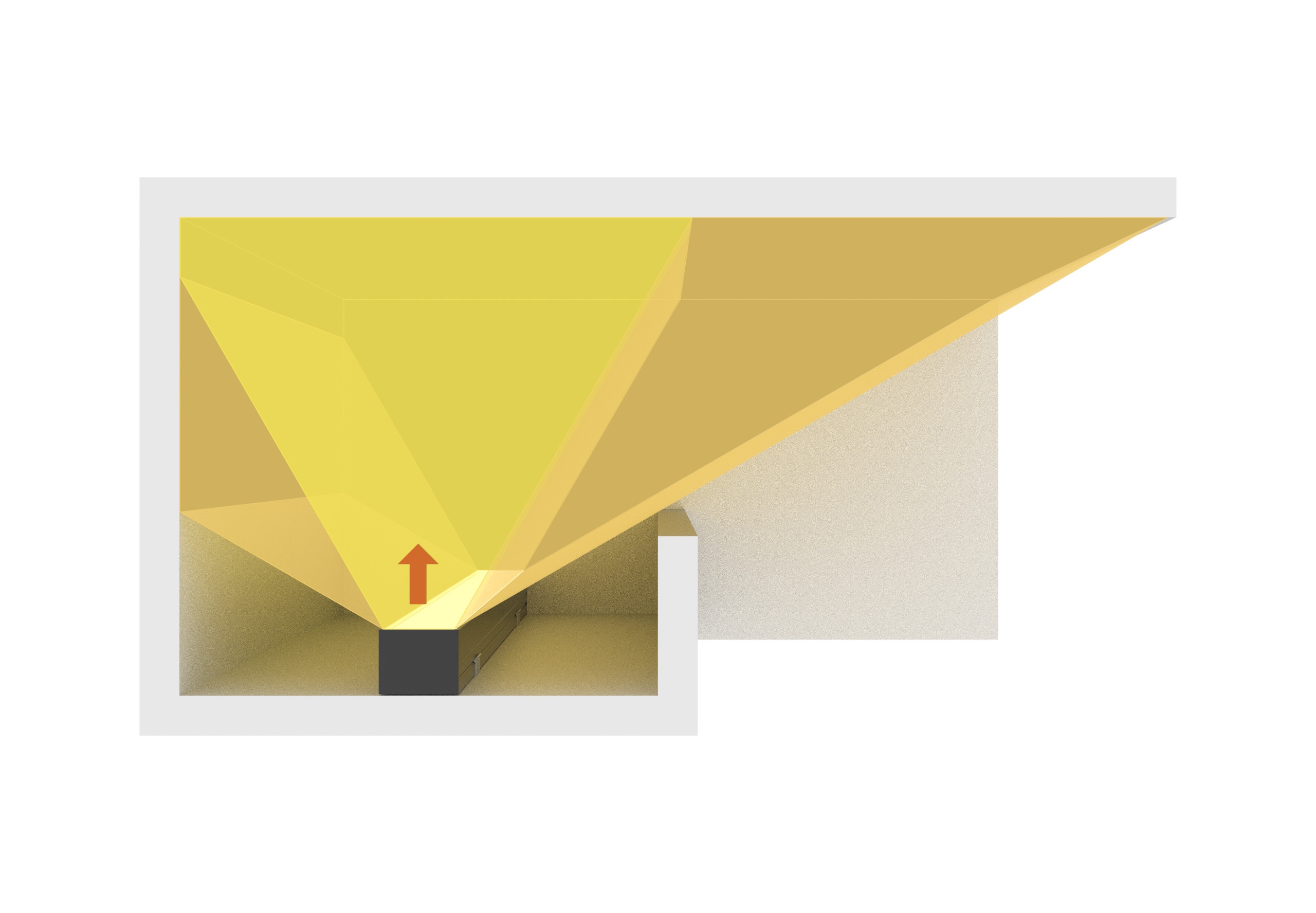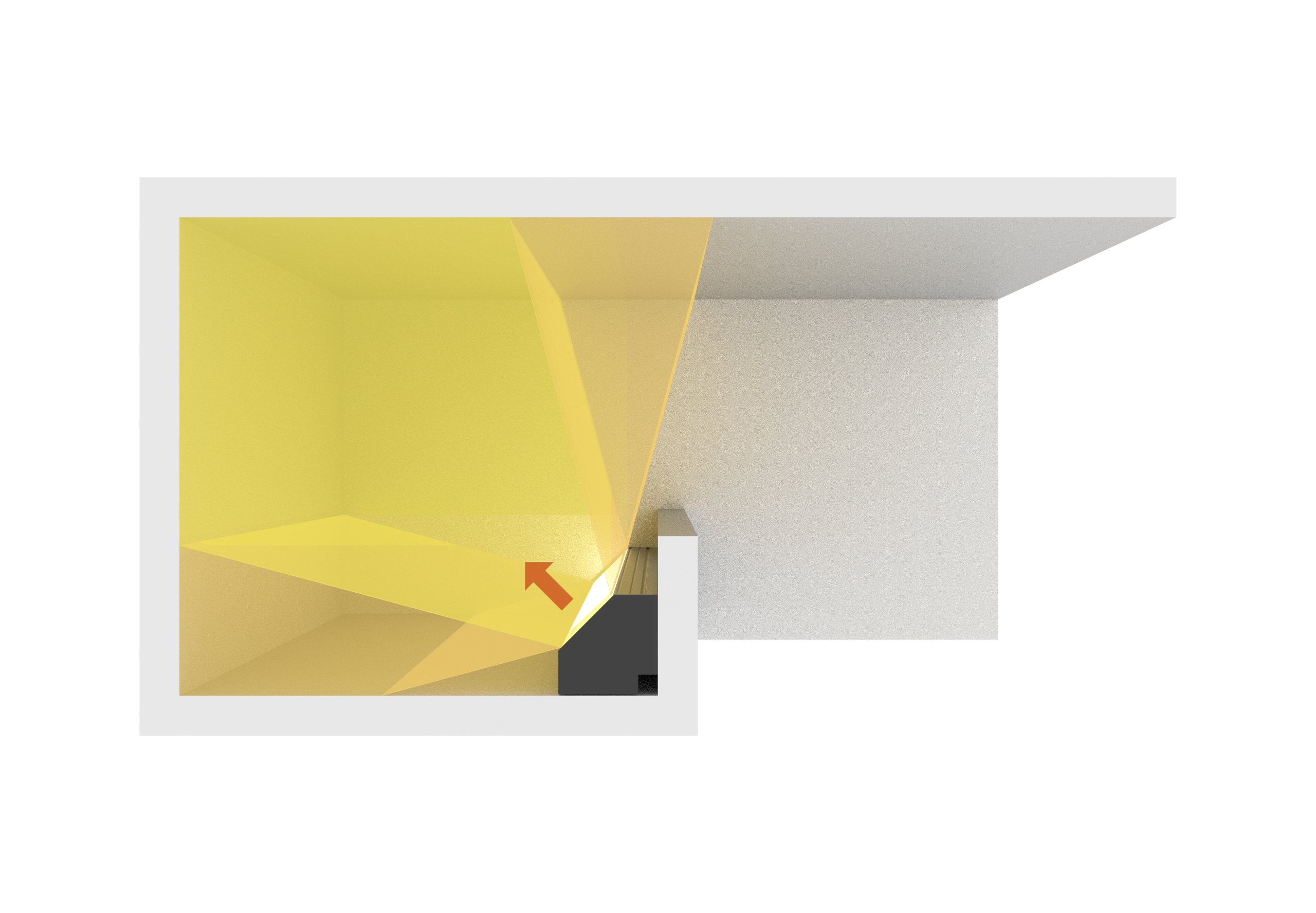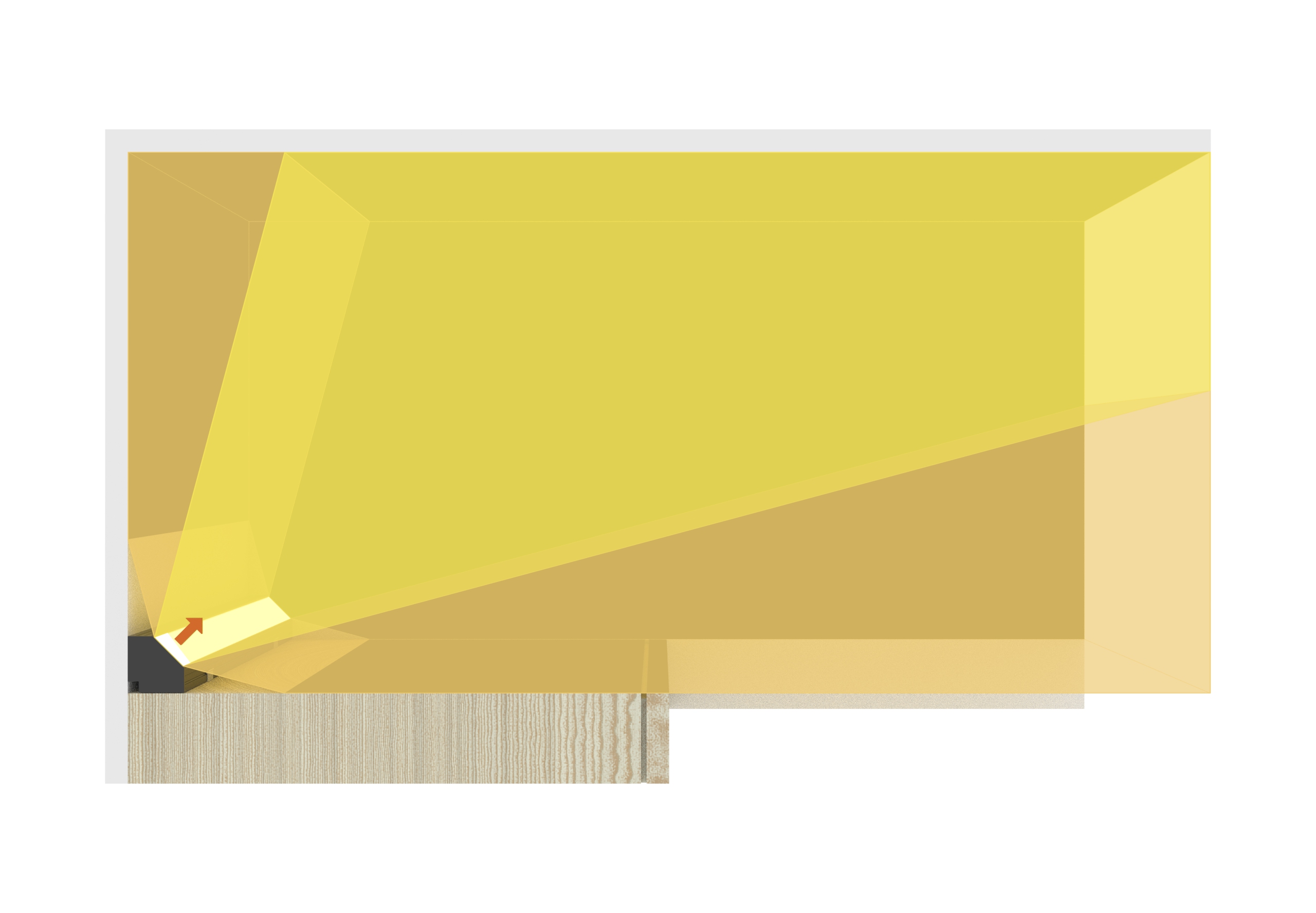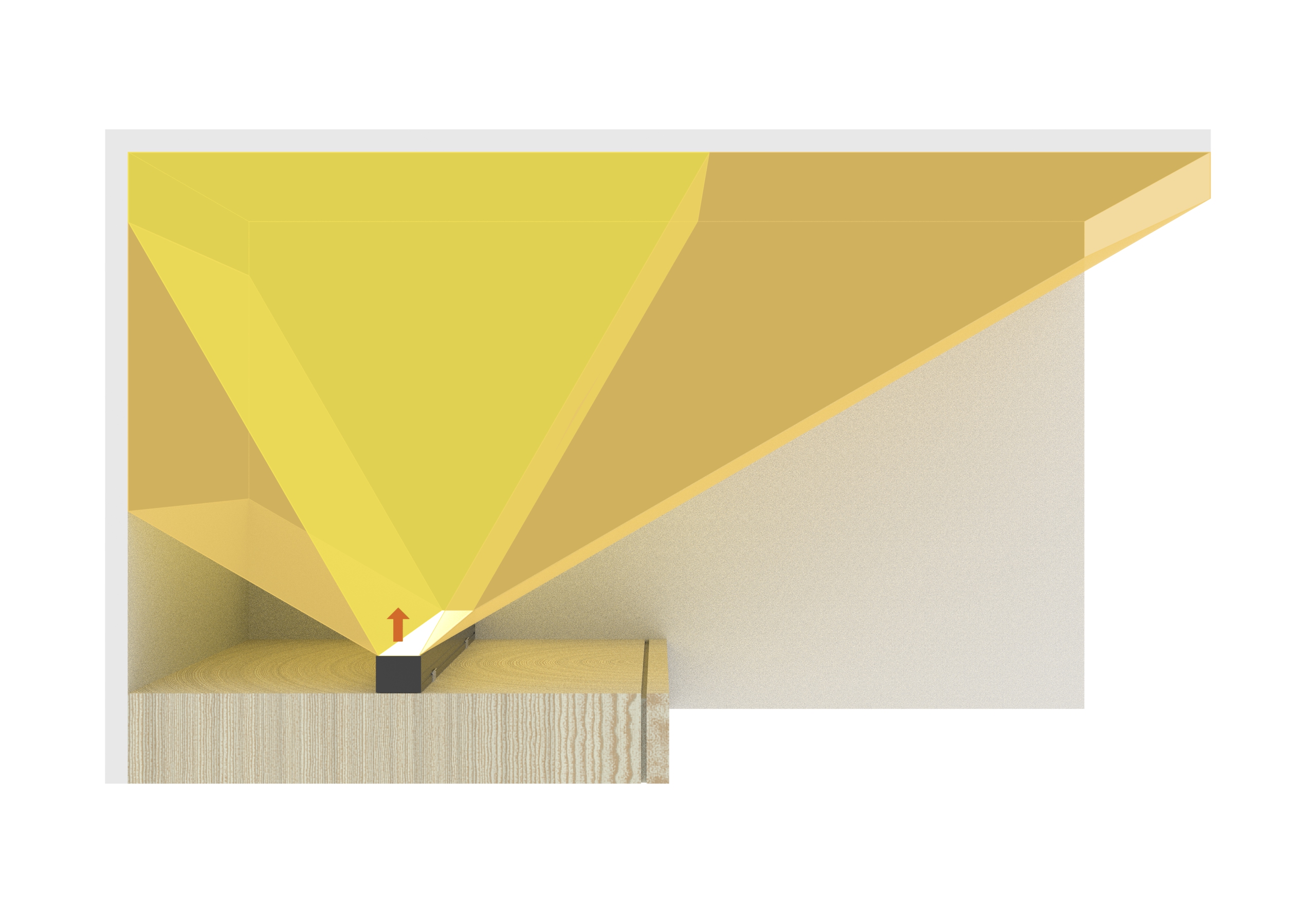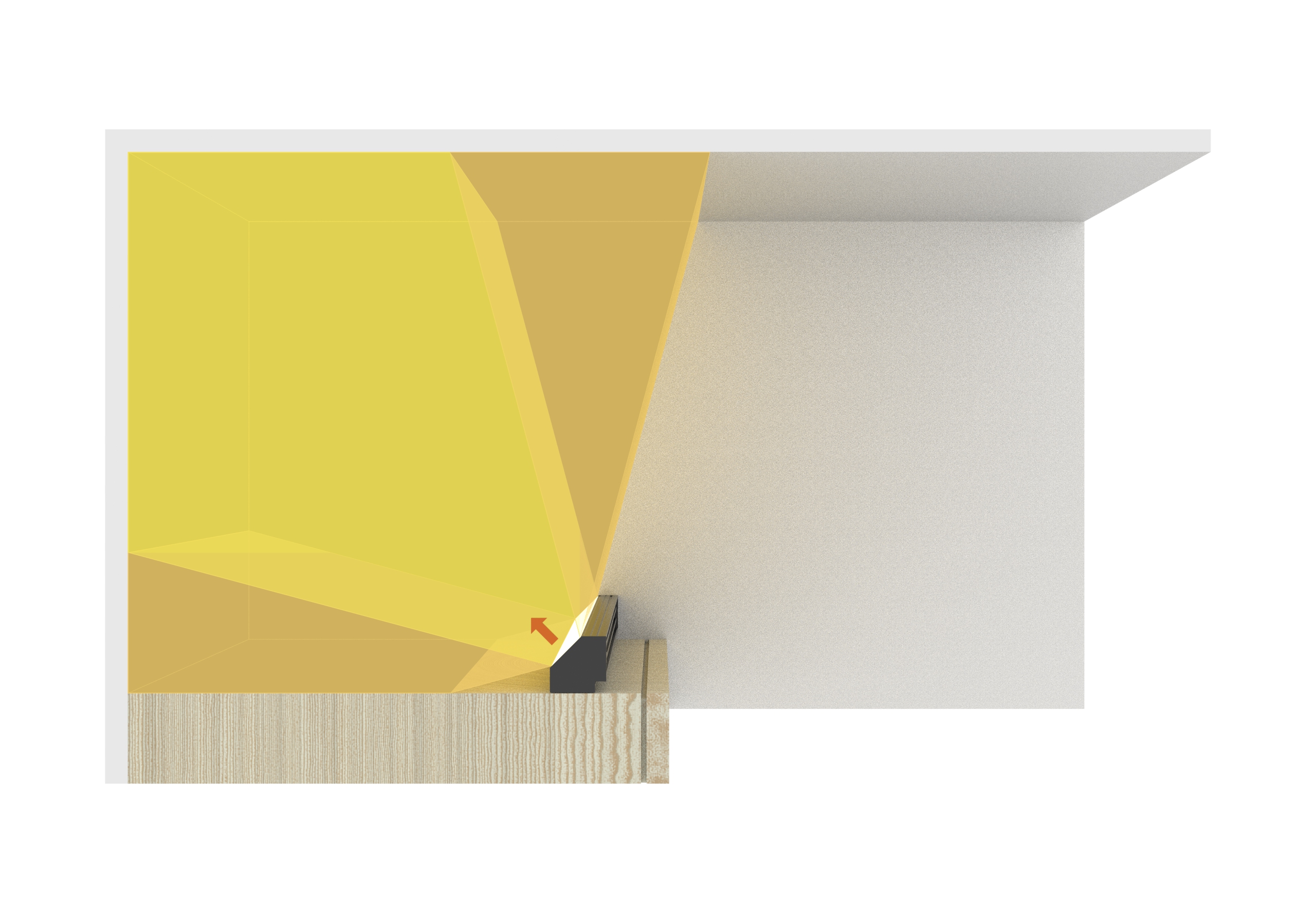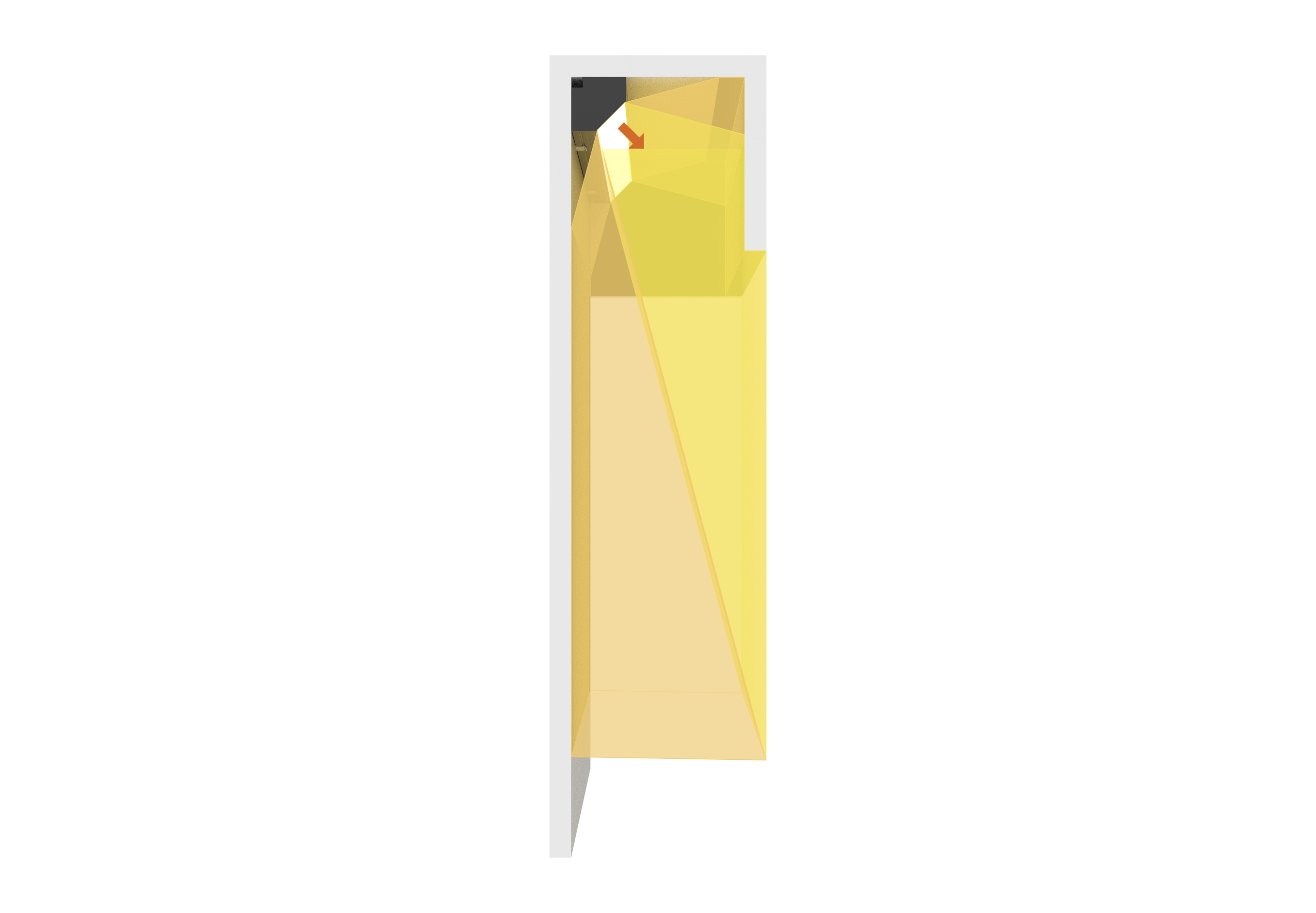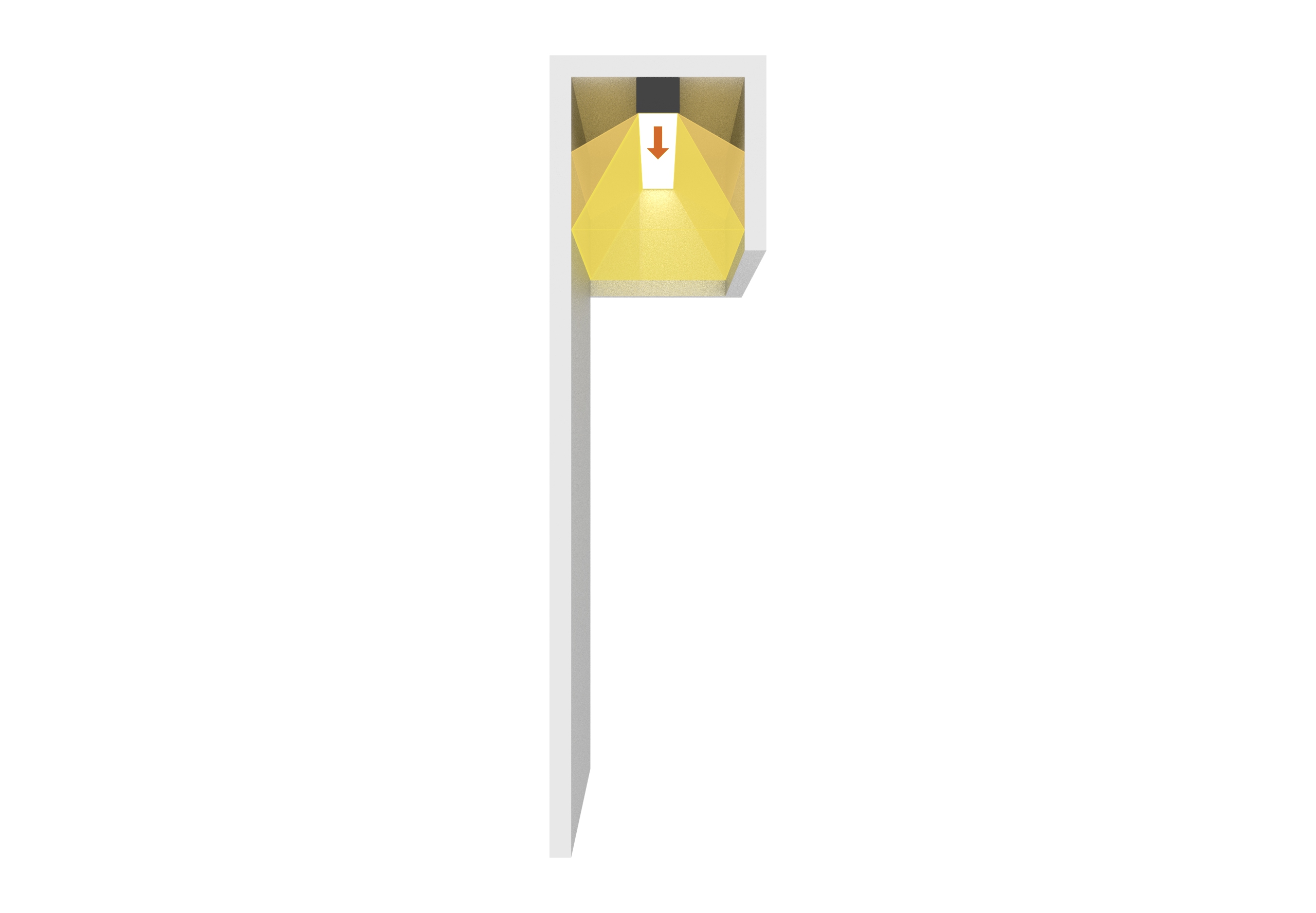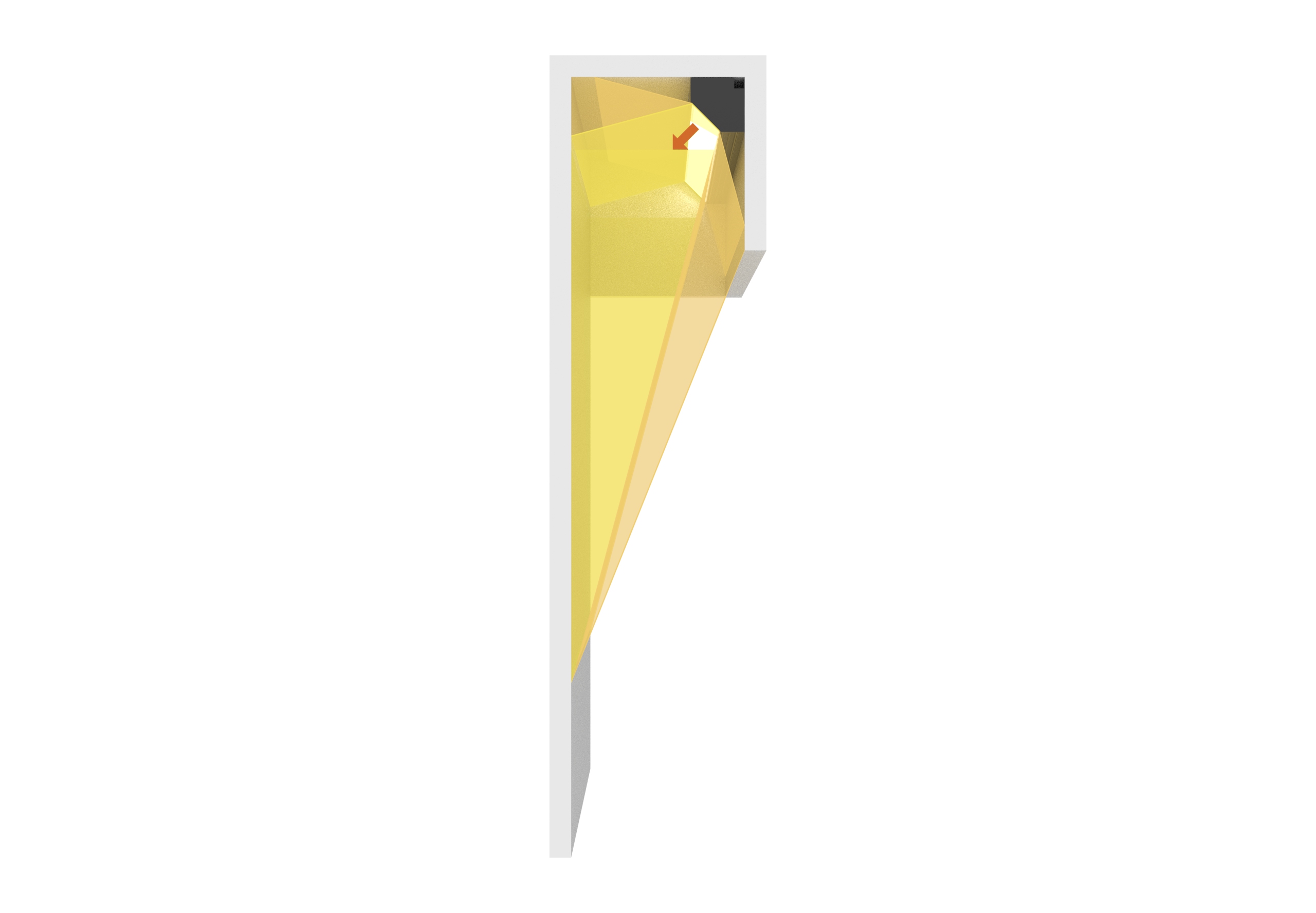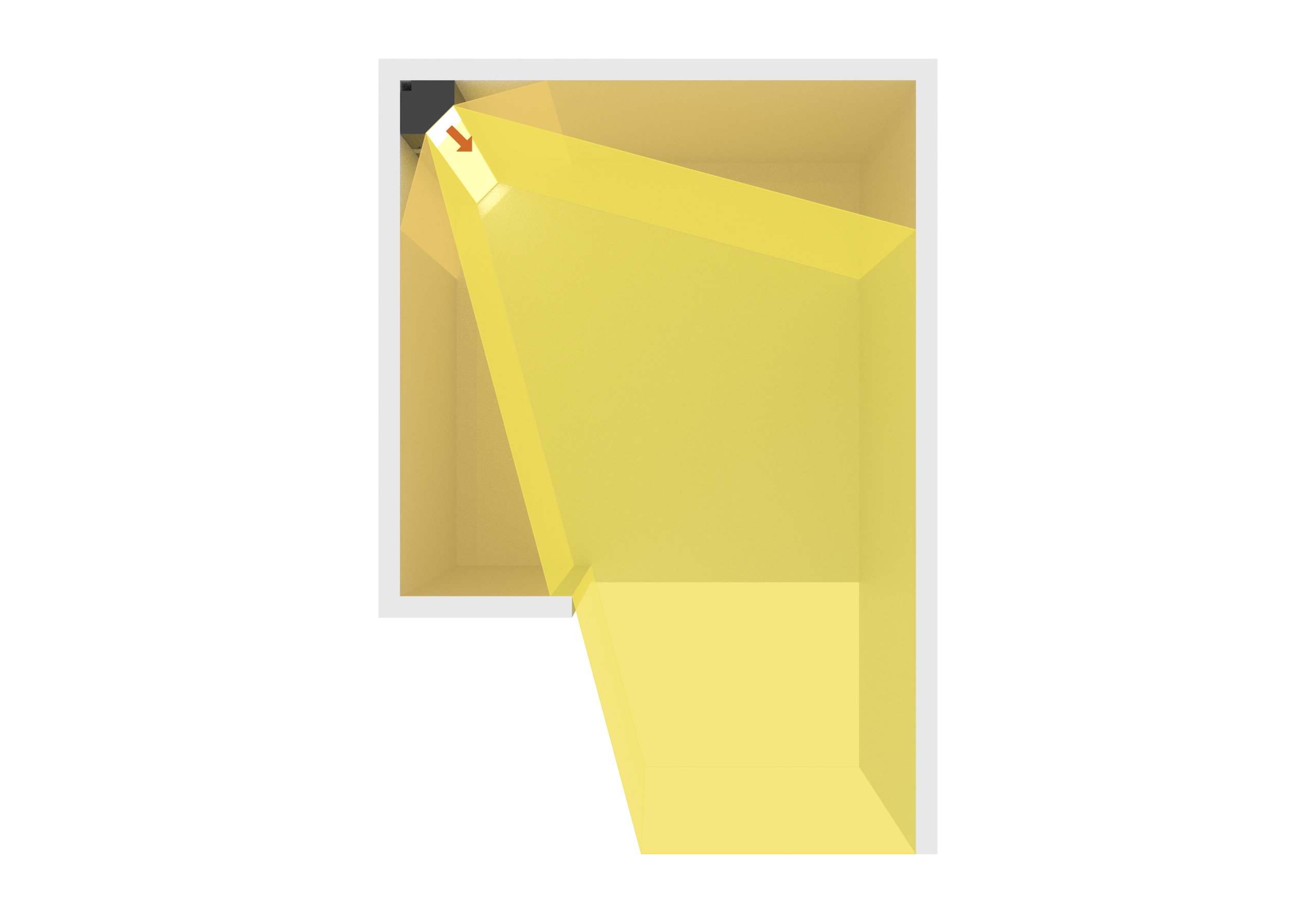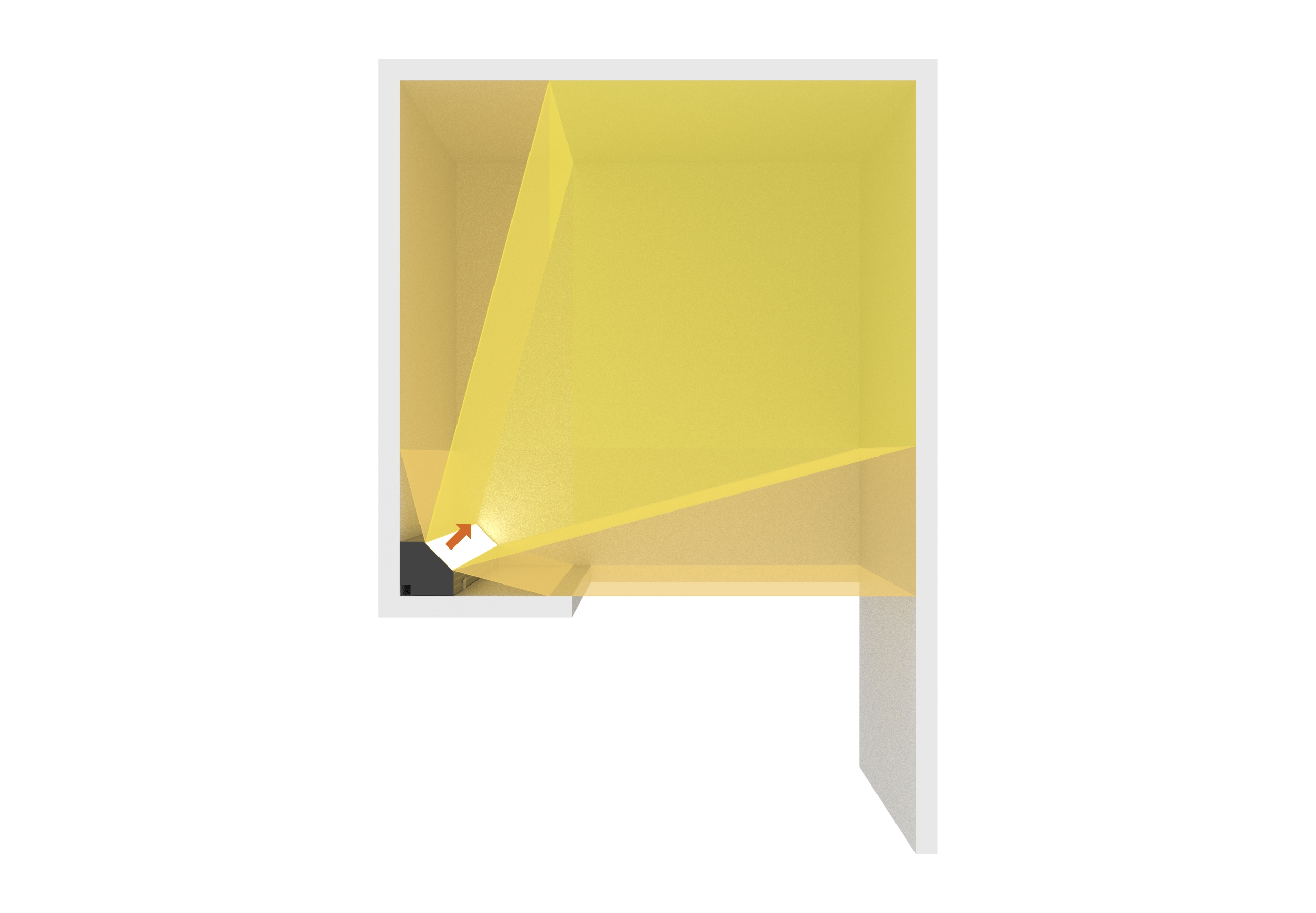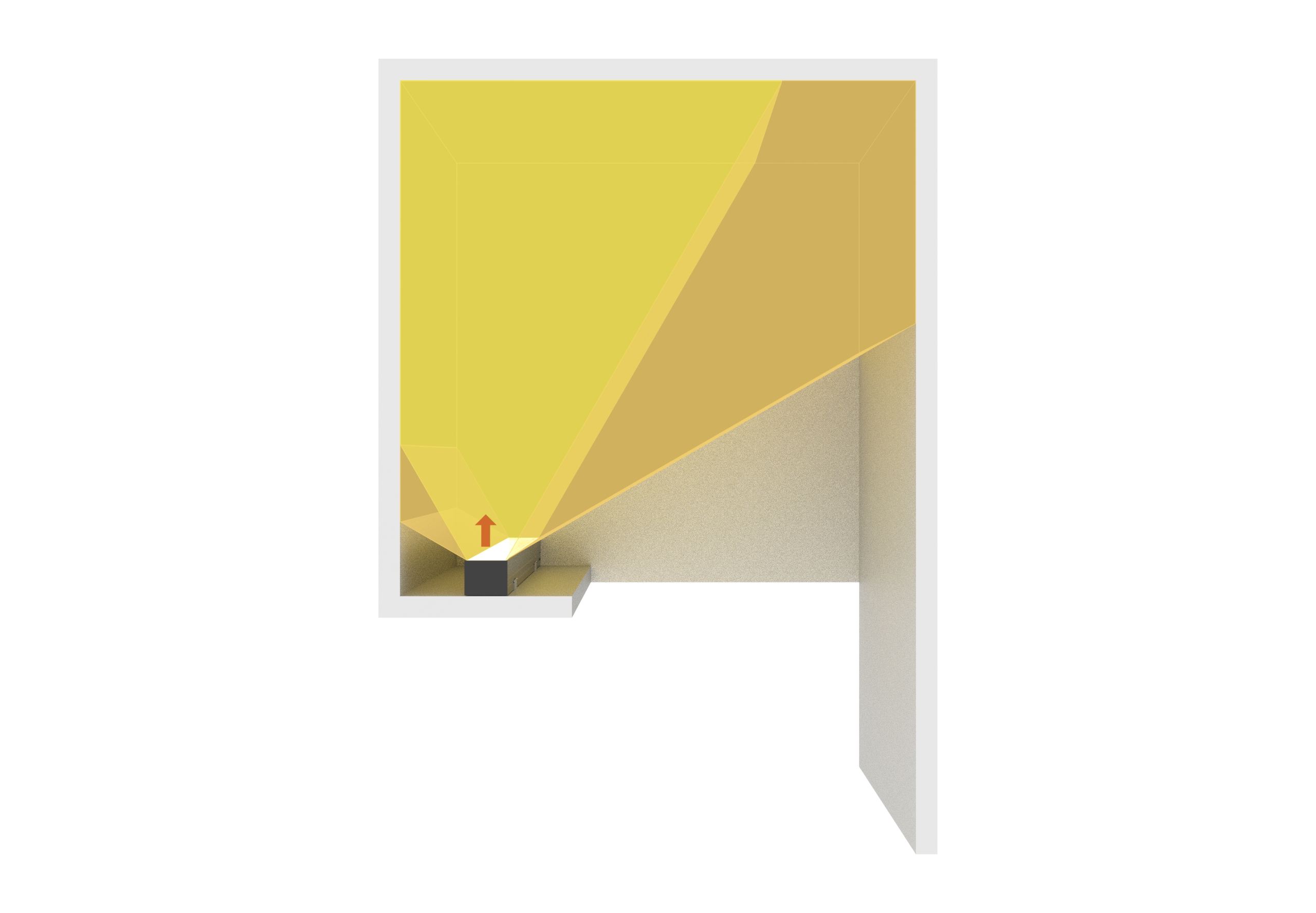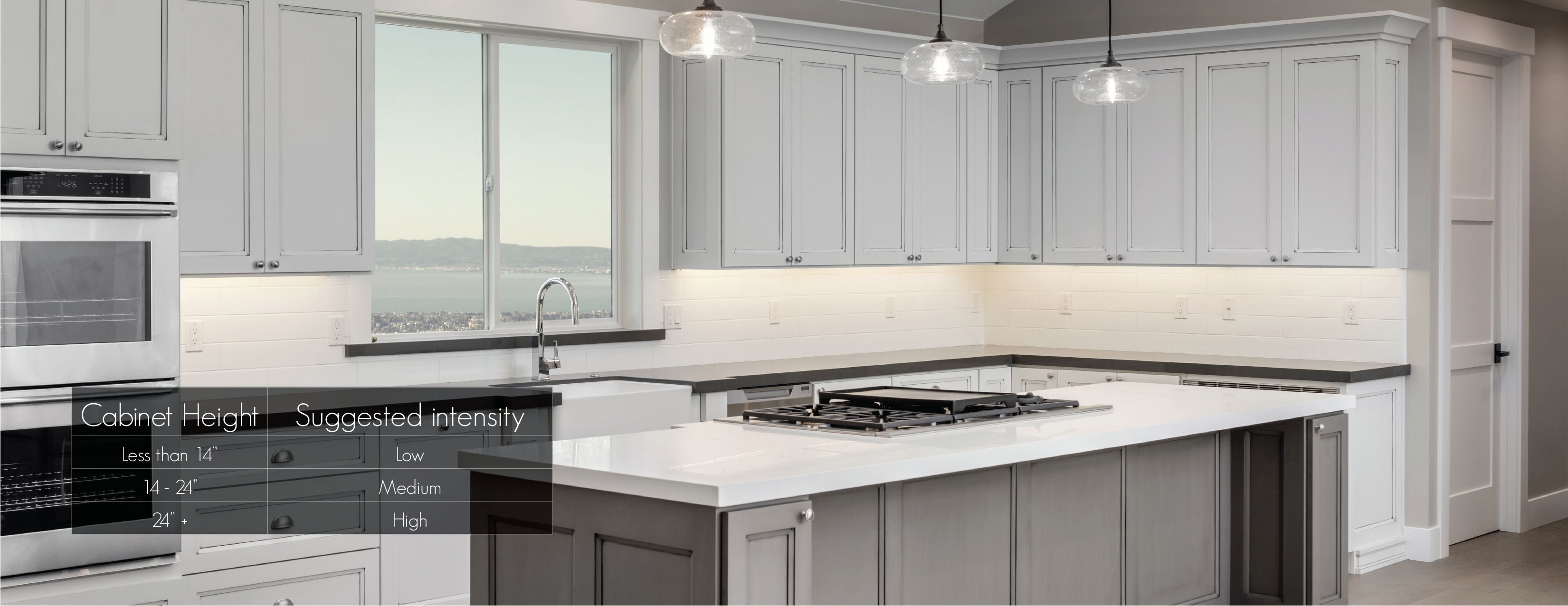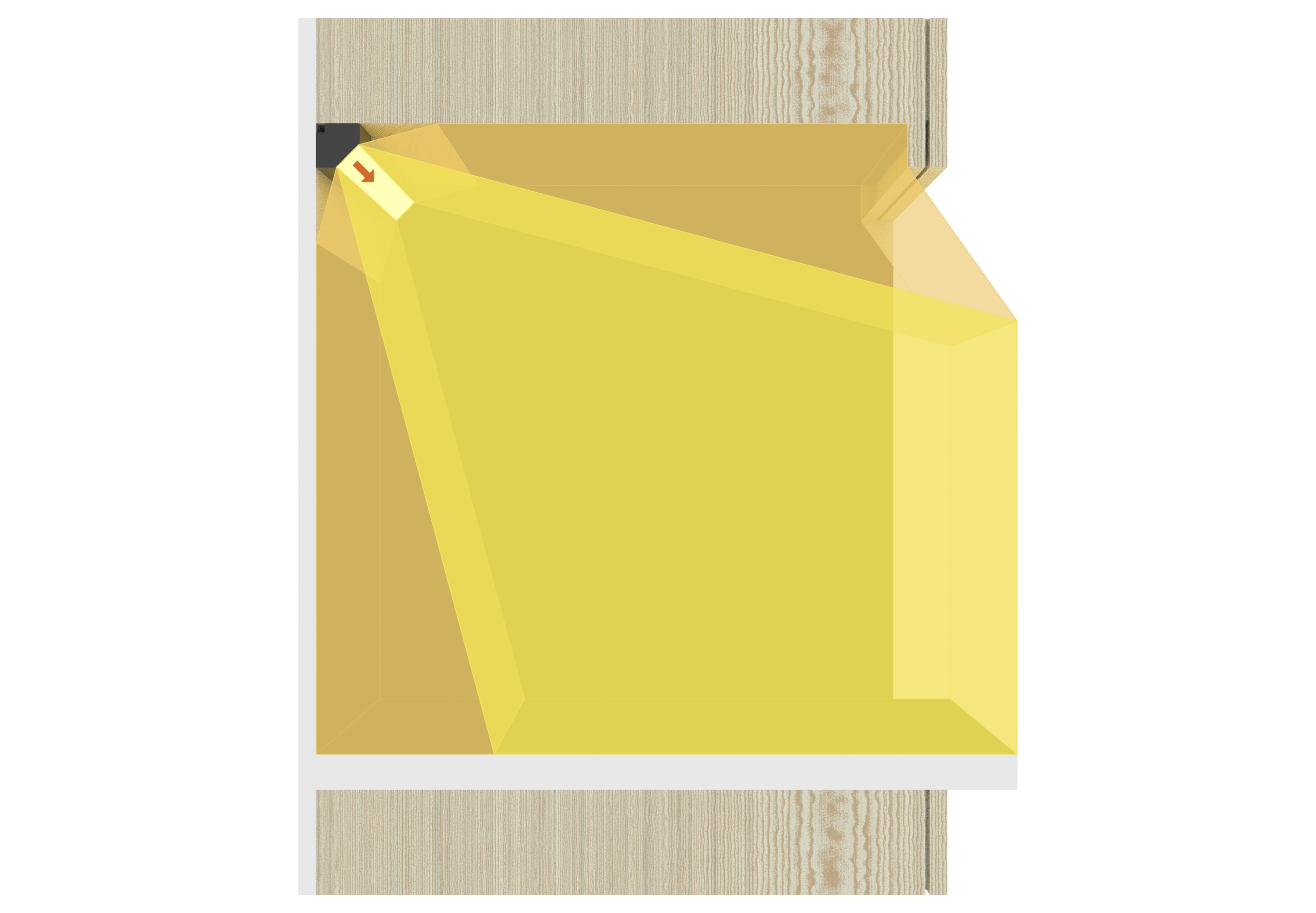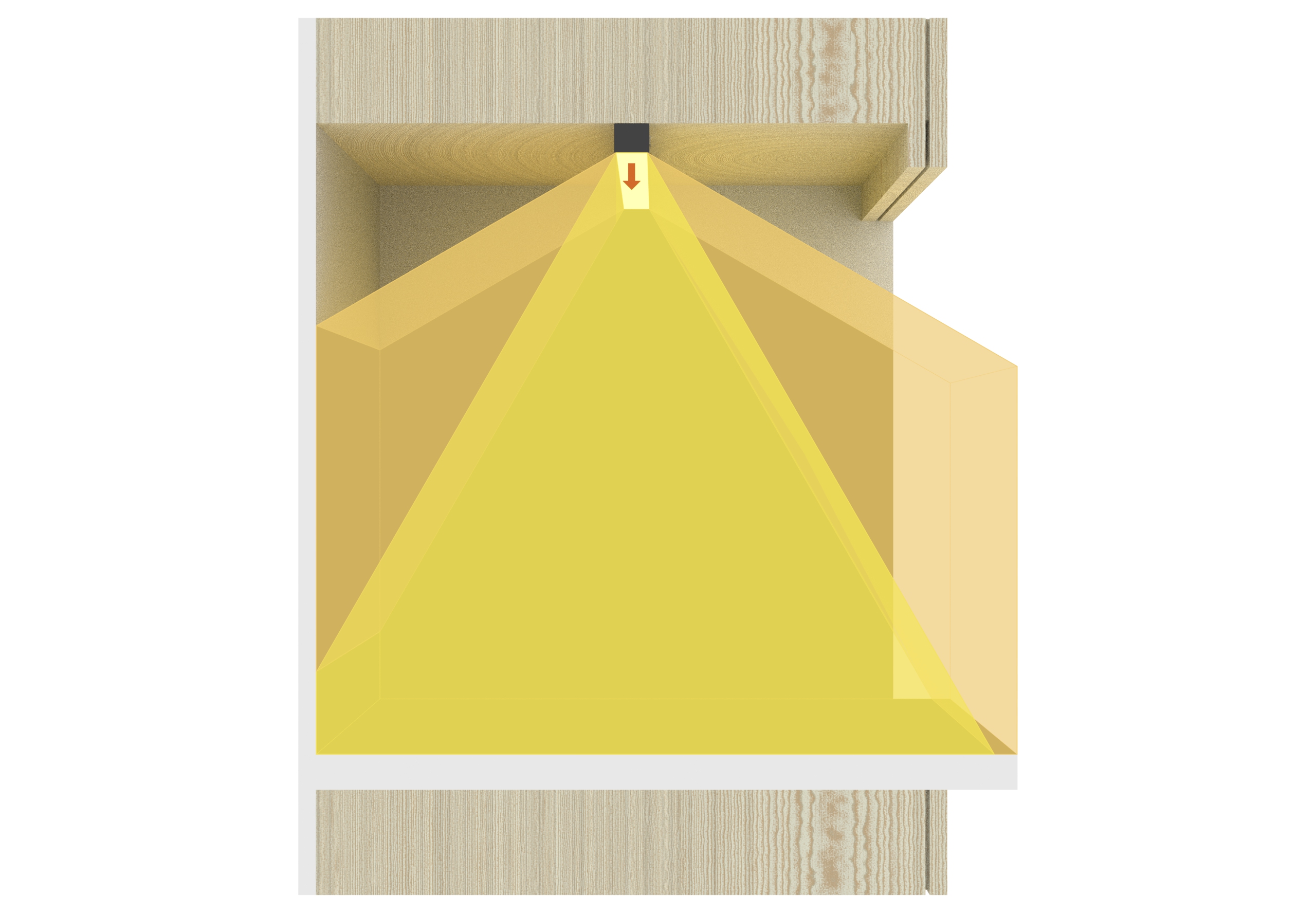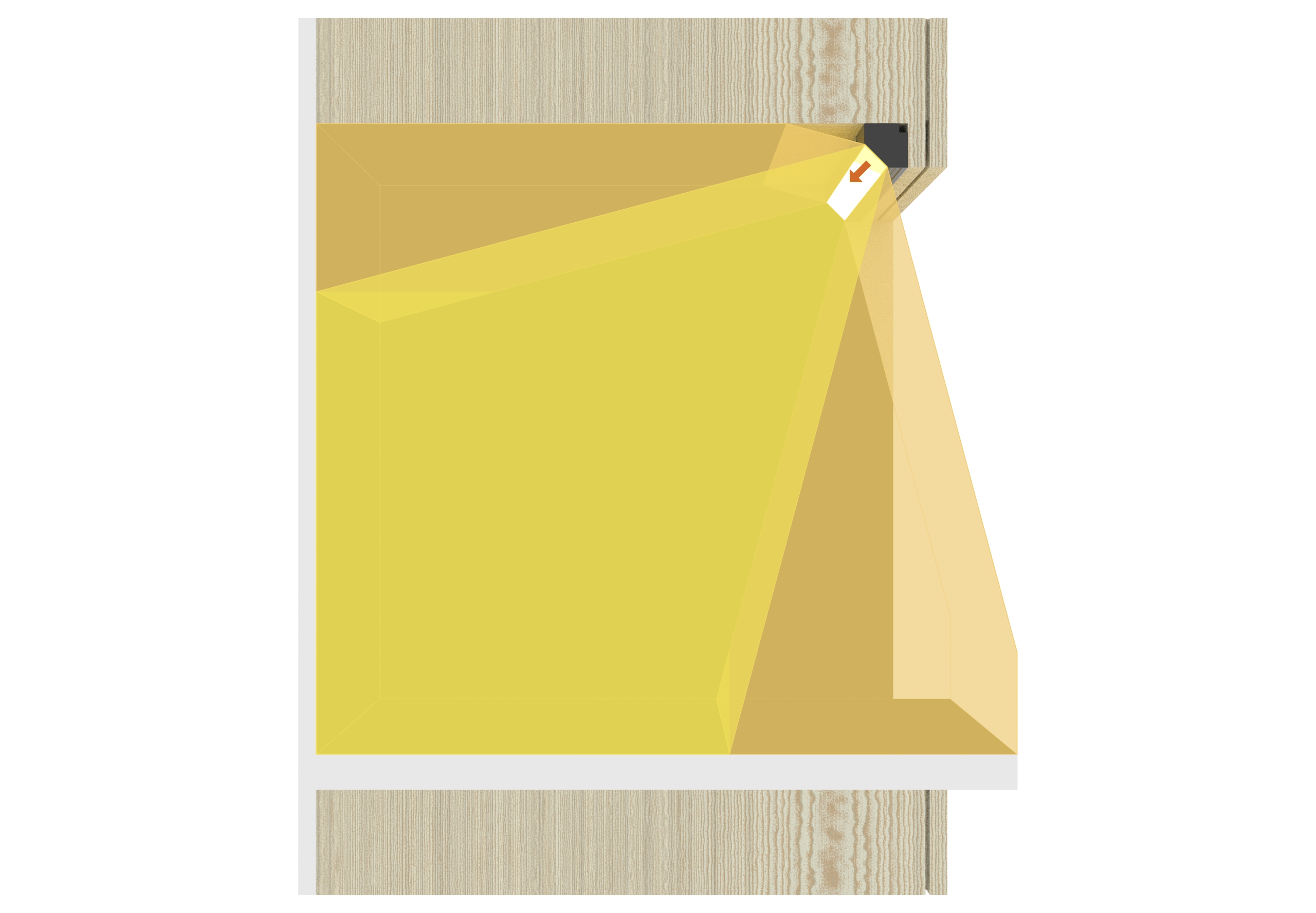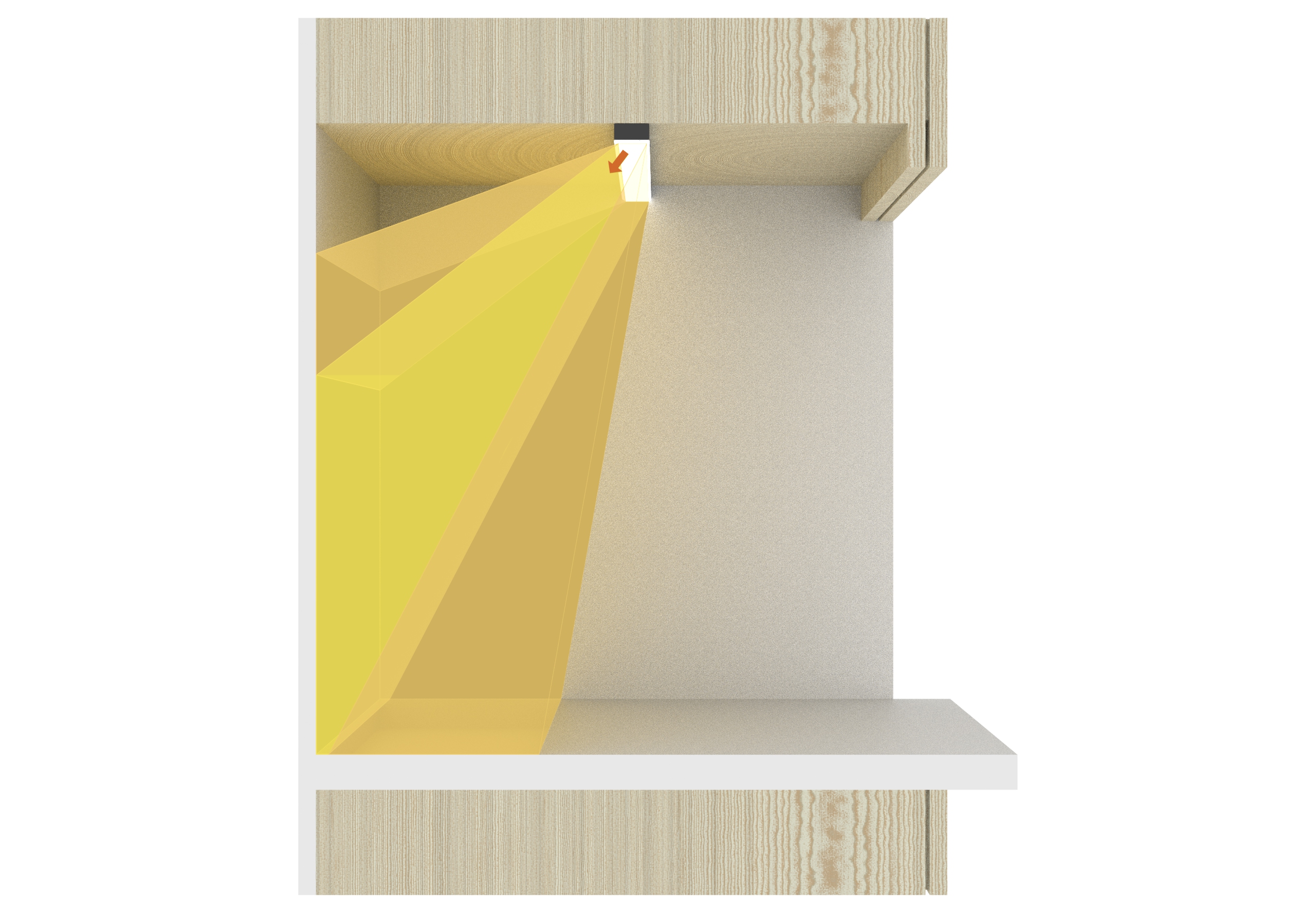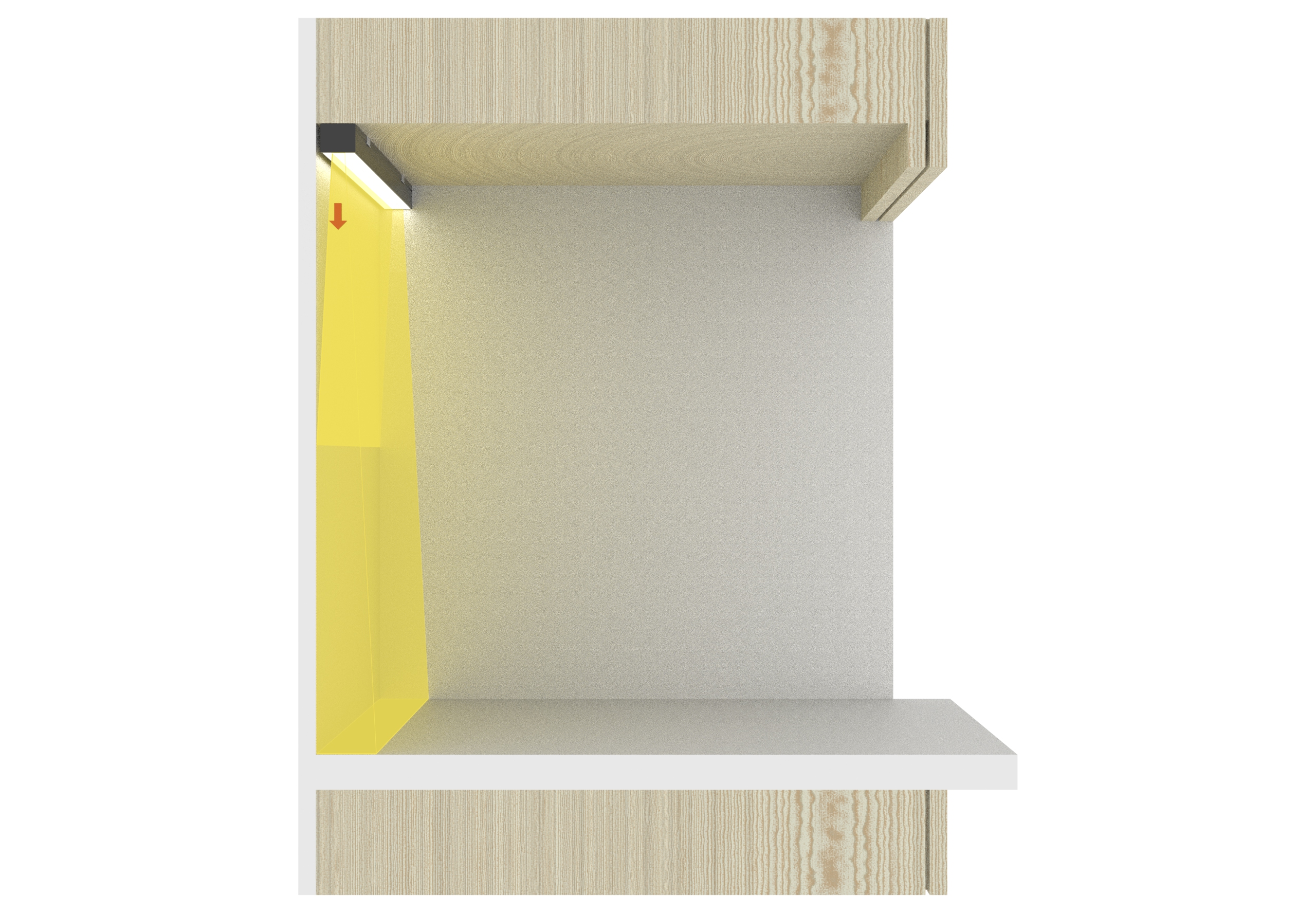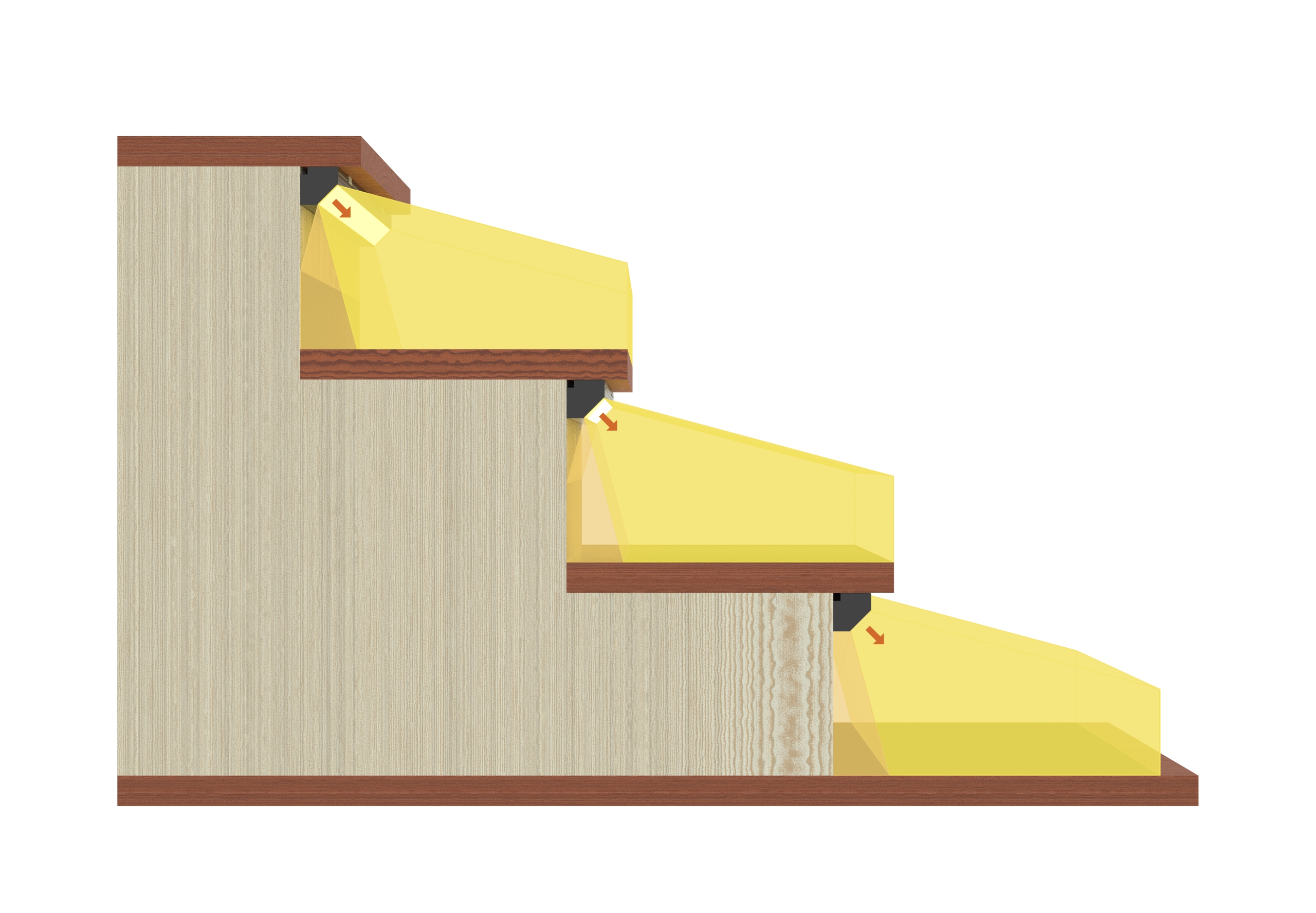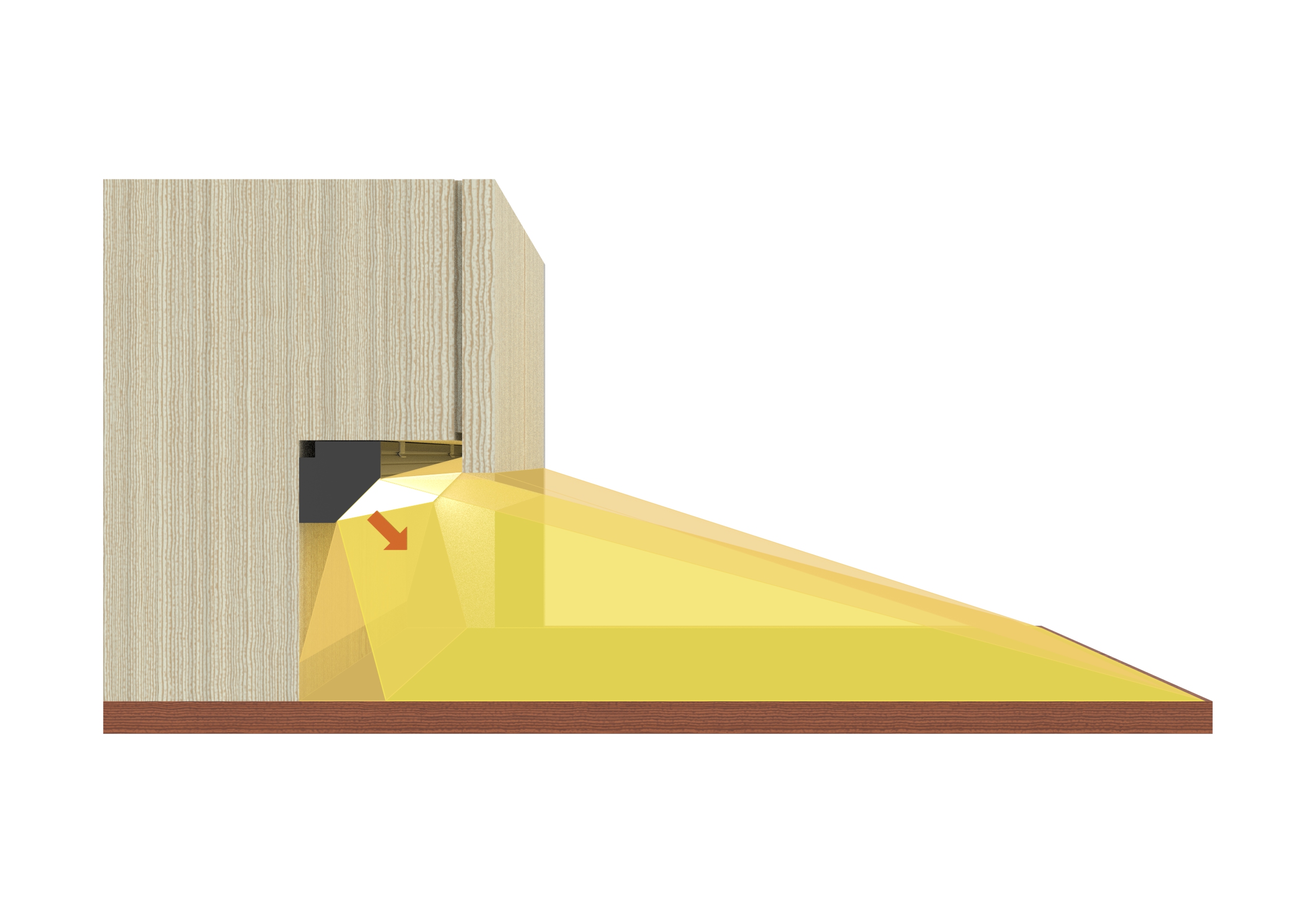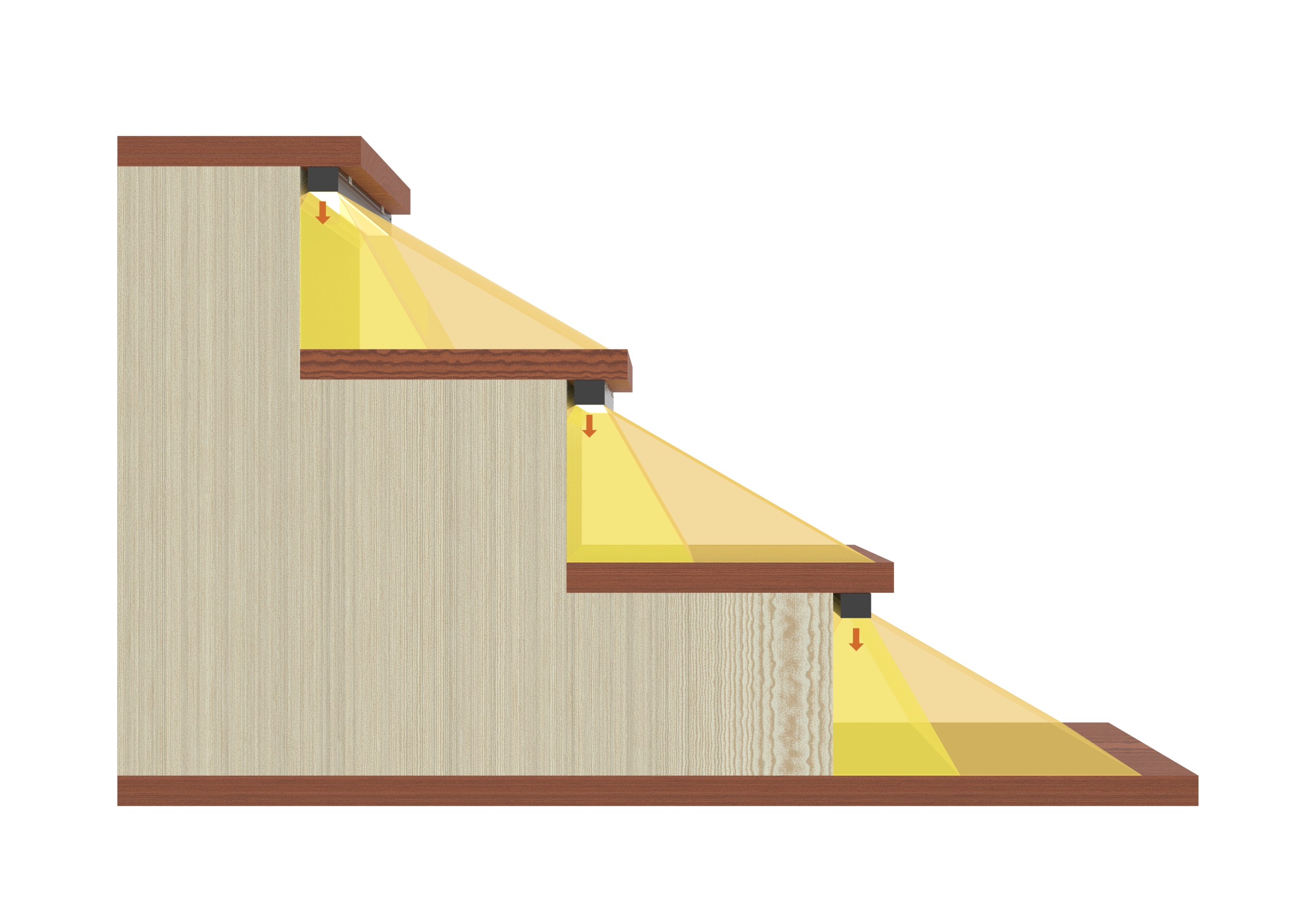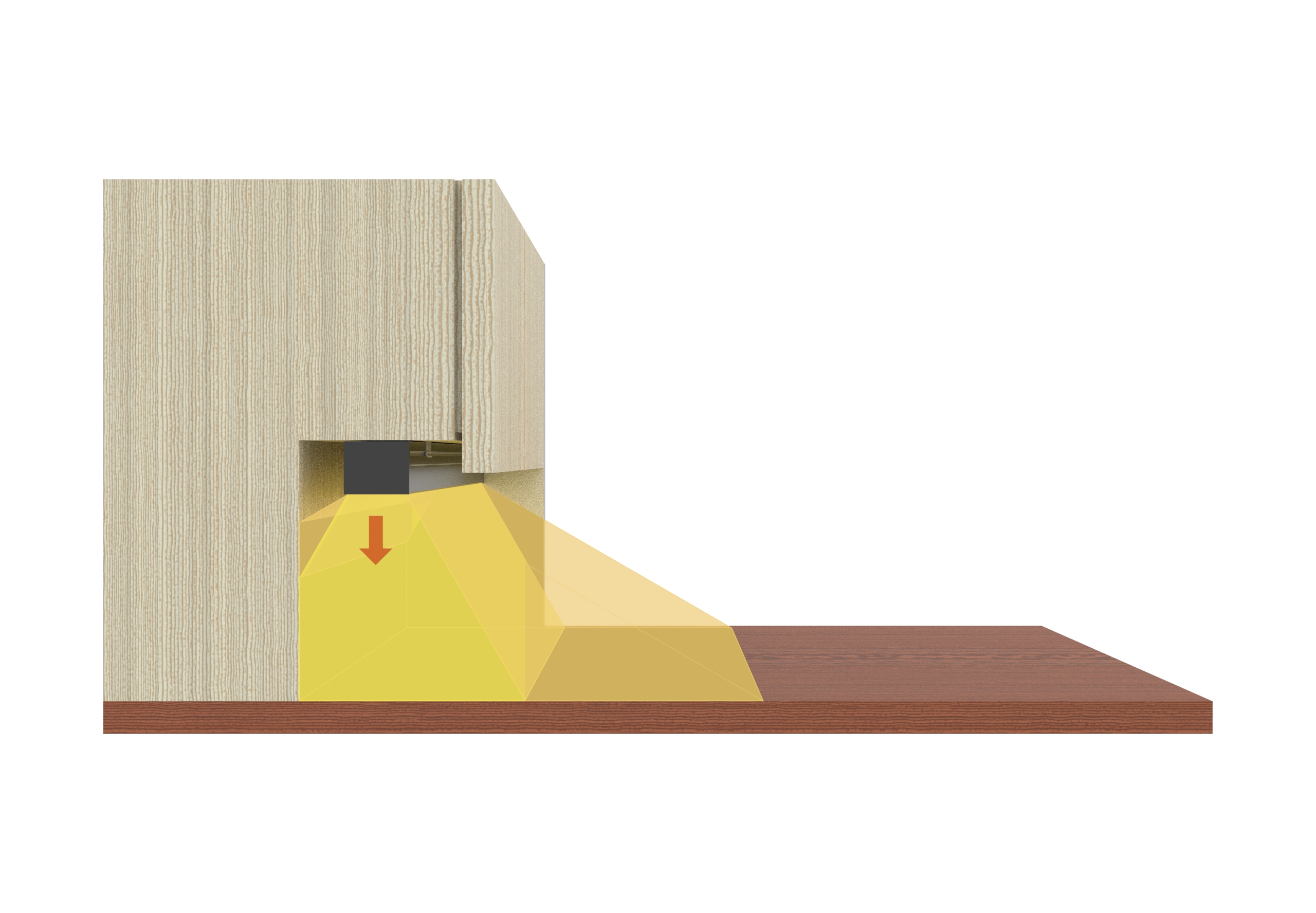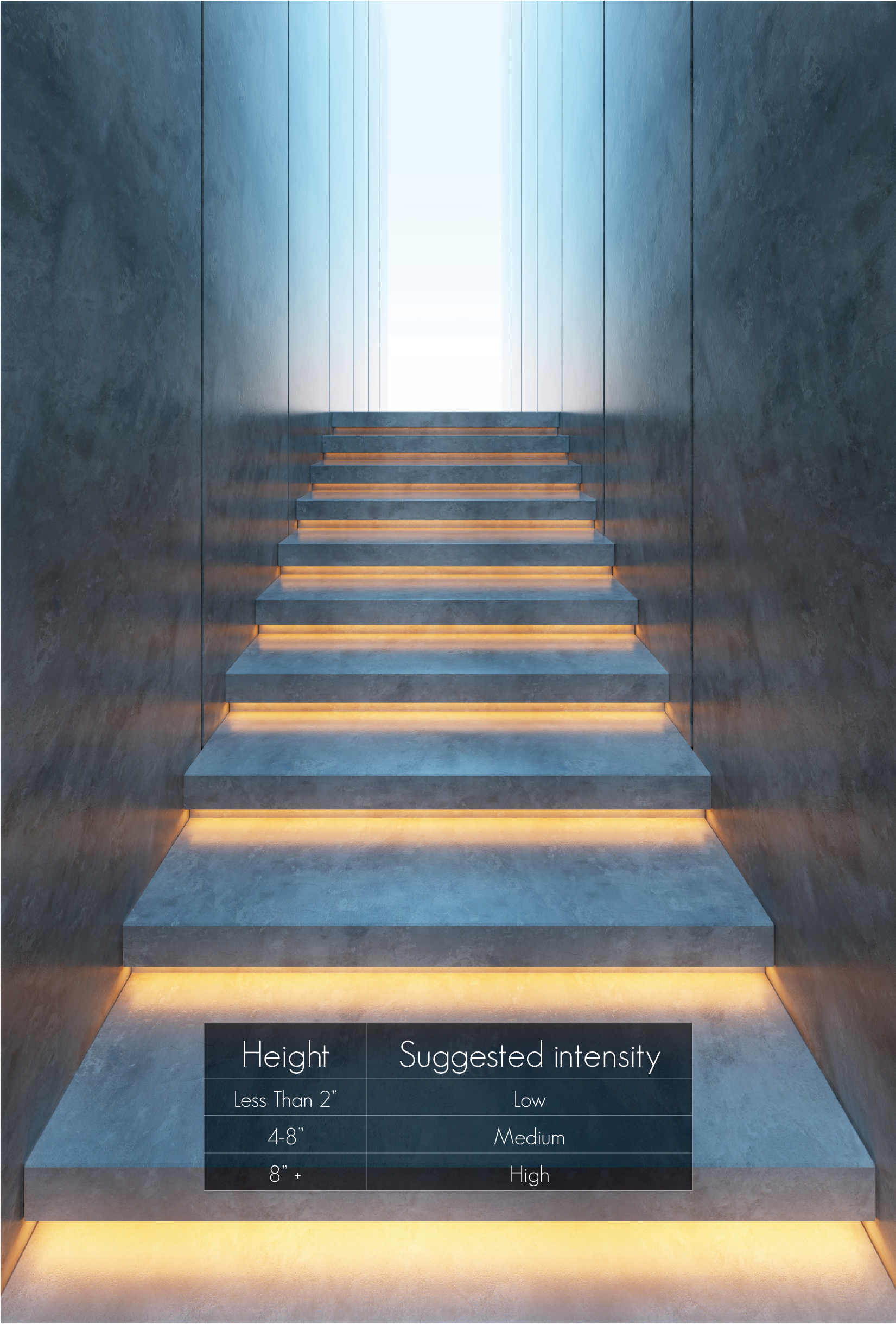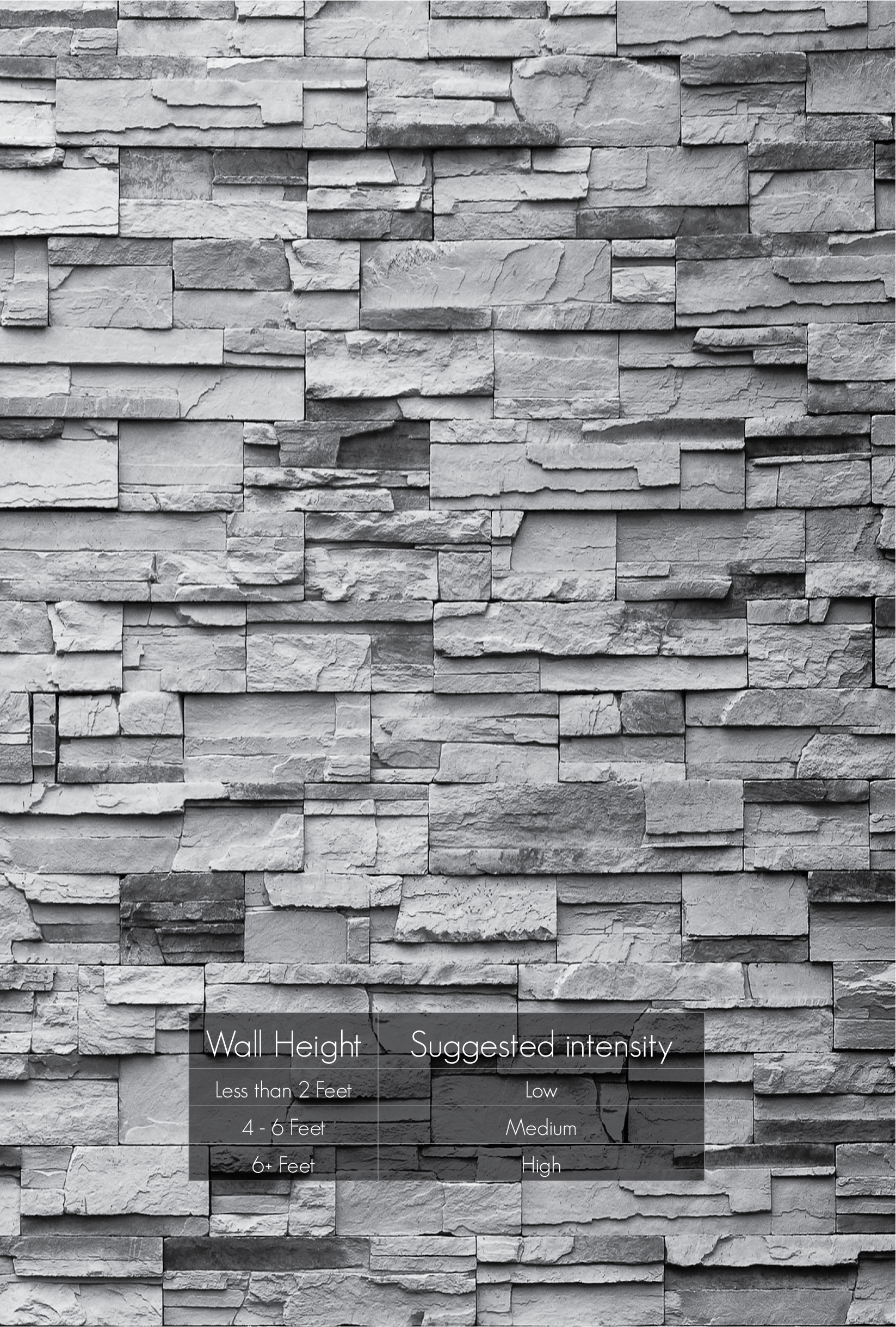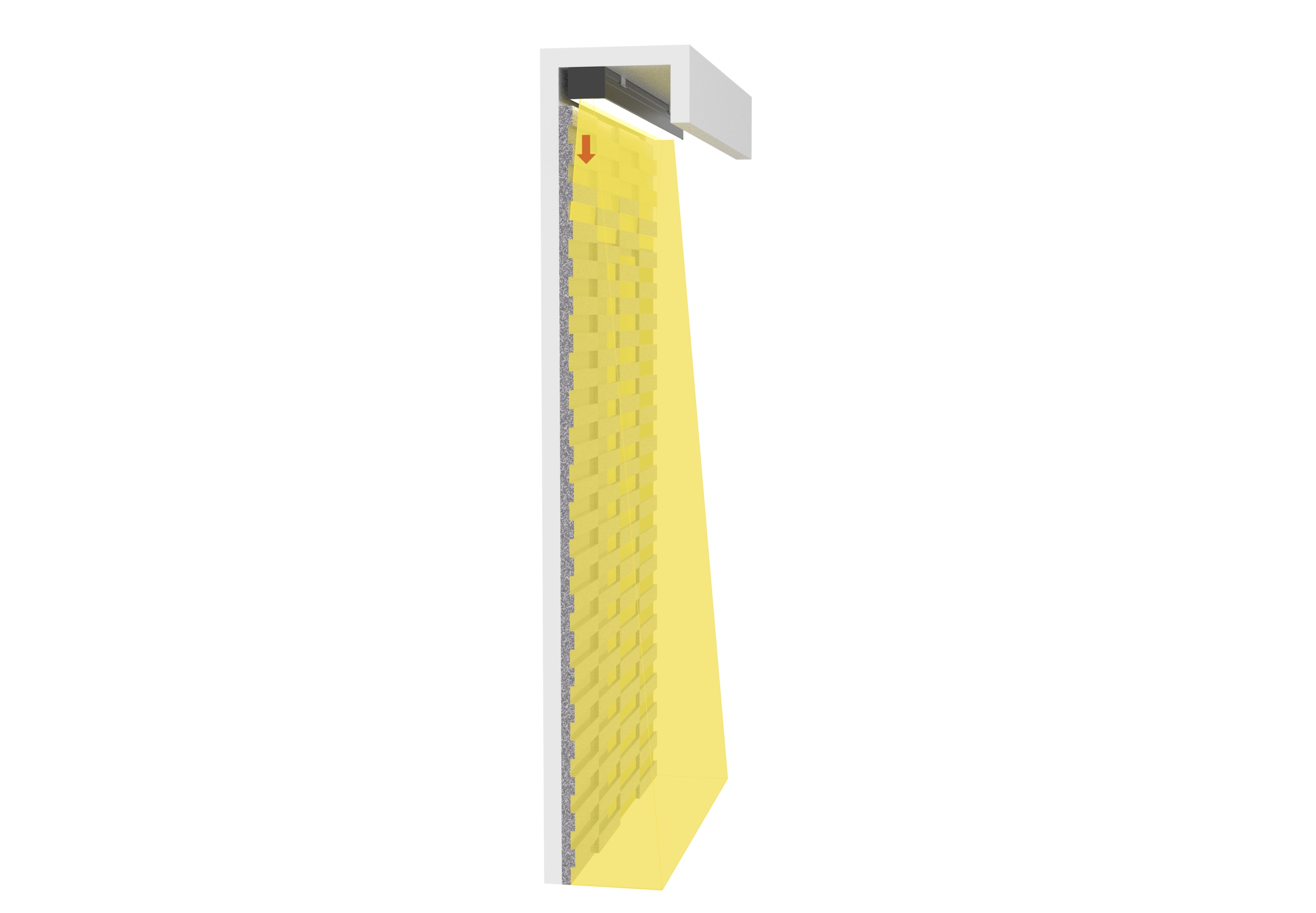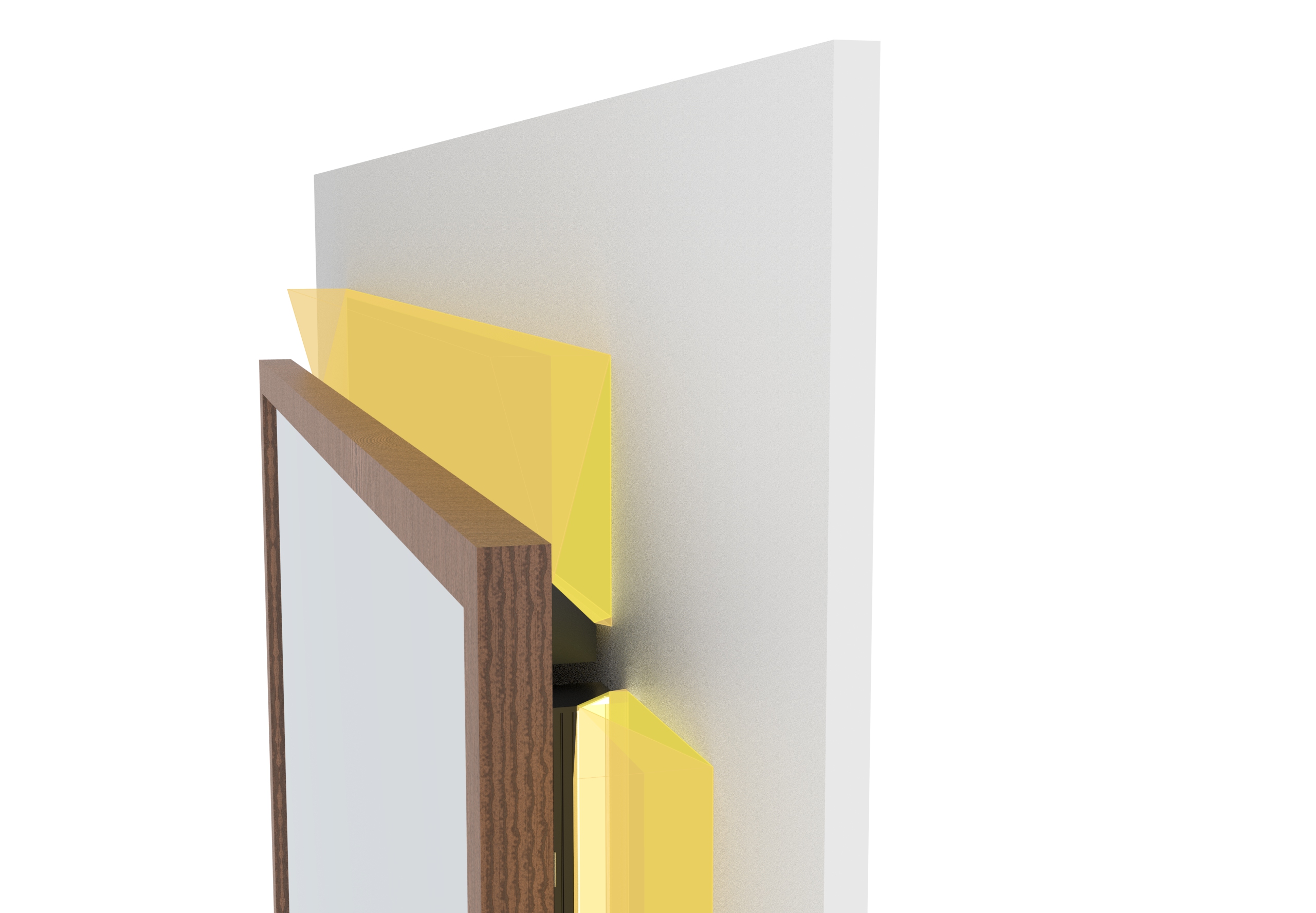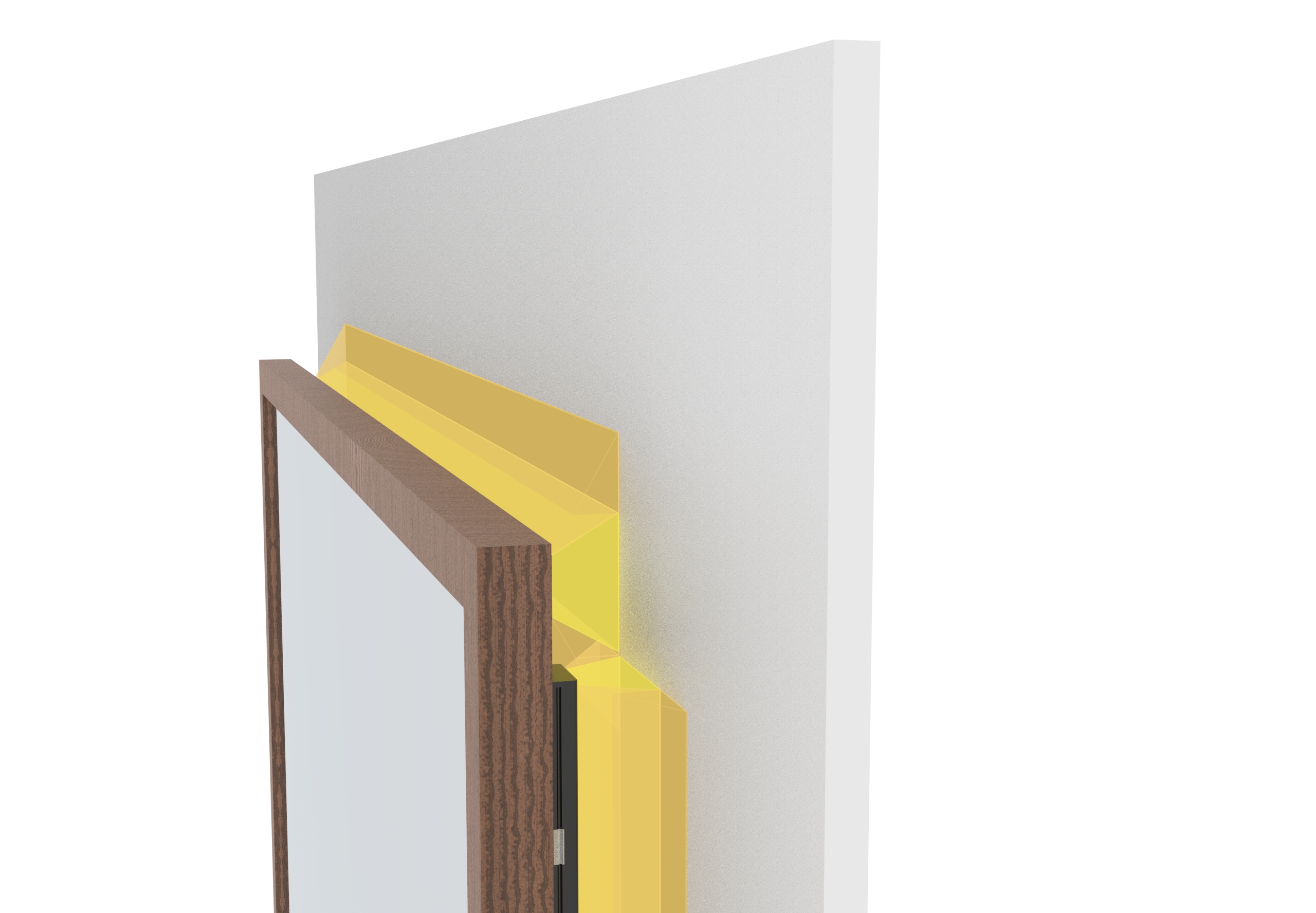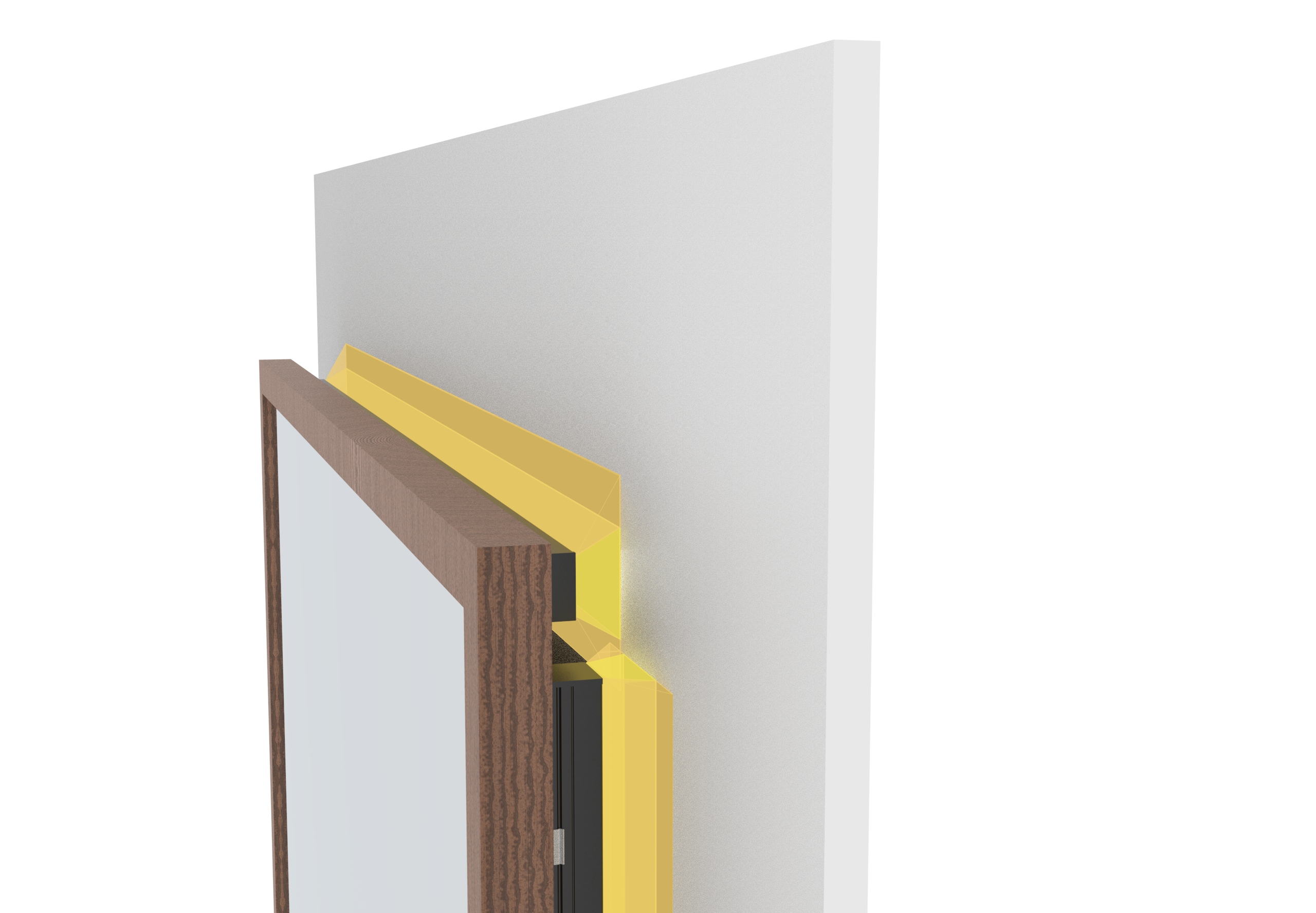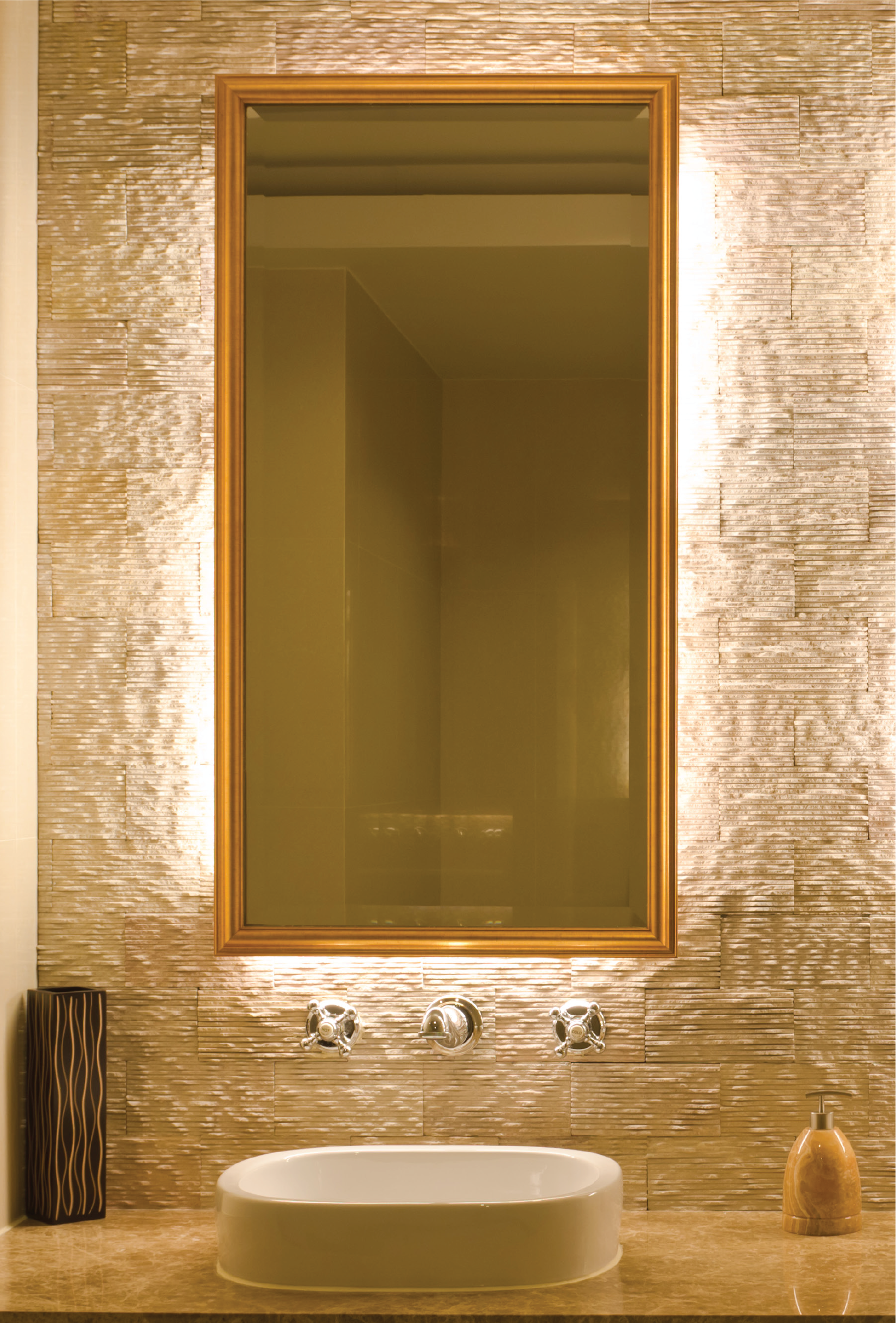Terminology
Color Temp (CCT)
Color temperature is a way to describe the light appearance provided by a light source and measured in degrees of Kelvin (K) on a scale from 1,000 to 10,000. Warm tones (2000 – 3200K) are generally viewed as incandescent, early morning or sunset sunlight, candlelight, etc, while Cool tones (4000 – 10,000k) are generally viewed midday. It is scientifically proven that the use of cooler tones elicits greater productivity from people, while the warmer tones relax and calm the body.
CRI
An acronym for Color Rendering Index, is a term used to describe the measure of how well light sources render the color of the objects they illuminate. The higher the better. The highest CRI is 100, which would only be given to a source identical to standardized daylight. The CRI of a light source is calculated by comparing the appearance of eight reference colors (R1 to R8) under the light source in question with a reference light source (incandescent light or sun light). The smaller the difference between the reference colors when viewed under the two light sources, the higher the R value will be. The first eight R values are then averaged, and the resulting number is the CRI (or Ra) value.
Lumens
The luminous flux, or brightness of a fixture. Lumens measure how much light you are getting from a fixture. More lumens means it’s a brighter light; fewer lumens means it’s a dimmer light.
R9
As noted above, CRI is calculated by comparing the 8 (R1 to R8) reference colors, with the 9th one, R9, one being red. A source that has a high R9 value often has a higher CRI.
Foot Candles
A unit of illumination equal to that given by a source of one candela at a distance of one foot (equivalent to one lumen per square foot or 10.764 lux).
Lux
A unit of illuminance, equal to one lumen per square meter. Used to measure light in a given area.
Surfaces
Reflective Surfaces
The angle of incidence equals the angle of reflection
For any surface with a shine, you want to avoid any direct lighting where the light is perpendicular, or 90 degrees, to the plane, as the light will reflect right back at you. For this application, angling the light from the surface, say, at 45 degrees would be the best solution. To avoid seeing any hot spots on the surface, we would suggest using a Milky lens to diffuse the light and create soft glows.
Matte Surfaces
Think of surfaces such as wood without sealant, drywall or natural materials. Depending on surface, you may want to highlight these details or flatten, or hide them. For these purposes, you can choose to use a location that skims, or grazes the wall for dramatic highlighting of these details or washing the surface to create an even tone of light. Locations close to the surface and lighting across it create this grazing effect, while a position further away and above or below will create a wash effect. The Scout Optic Fixture would be a great option here.
Shadows
Along with Contrast, the use of Shadows could be your friend or the bane of your existence. Lights too far away from their subject or exposed could cause unwanted shadows if items are placed in front of them. Lights too close could cause hotspots in some areas and dead spots or darkness in others. Decide if you want to use a lensed fixture to highlight that feature wall from a cove or wall wash to reduce shadows.
Contrast
You may have a surface with a varied color palette or materials, allowing you to choose to enhance or mute this likely feature in your room. This feature might also look quite different in various light levels, which may create an interesting dynamism. Test out a few different light levels, colors and positions for this to create the best effect.
Contrast can also mean the varying of light in the room. Bright ceiling lighting, specifically highlighted artwork or a feature wall and task lighting can create these contrasts.
Glare
Reflective surfaces, high contrast surfaces, and even some matte surfaces, if lit at the wrong angle, could cause glare: unwanted light reflecting back in your eyes, causing strain and discomfort. Glare could be from the high hats in the kitchen reflecting off countertops or from fixtures washing glossy walls and reflecting in the paint in an undesirable angle. The use of diffused light, Milky lenses and bouncing light into ceilings, for example, reduces this glare and creates an inviting ambiance to any room.
Types of Lighting
General Lighting
General lighting refers to the use of light fixtures and positions to create usable light for task, work, movement and safety.
Accent Lighting
Accent lighting refers to fixtures and materials that are mounted to create points of focus or interest or features in each location. While they may create light in the space, they are not necessarily the main source of light
Direct Lighting
Can be a light source that is seen or hidden, through masking, baffles, louvers or lenses.
Light source is visible and could be used as accent of as general lighting.
Indirect Lighting
Consists of bounce lighting, uplighting or any lighting that is directed upward.
Has a soft glow of even light that can be used as the main source of light or as accent.
Harnessing Light
Milky vs Frosted Lensing
In using all of our fixtures, you will likely choose a lens for your application. If you aren’t using our Optic lens system, you will be choosing between our Milky and Frosted lens.
Frosted lensing maintains the output, while slightly softening the points of light. Use this lens in indirect applications.
The Milky lens creates an even glow of light, while hiding the points of light and slightly reducing the output of the fixtures. Use in direct view applications.
Harnessing your Light
Corner
The corner fixture is perfect for throwing light out of a cove or upper cabinet.
Best for indirect lighting with our frosted lens.
Surface
The workhorse of the Scout Accent Line.
Great for direct and indirect lighting. Pair with the Milky lens for diode free illumination!
Optic - Asym 25
The optic line allows for beam manipulation. What better way to harness your light then to bend it your will. With 9 diff optic options you can choose what’s best for you.
Basic
The Basic fixture allows you to harness the core of the Scout Line – The Scout Engine. Works with all of our mounting clips and gives you a rigid mounting plane and heat sinking.
Standard Cove
Corner Back
Placing the light in the back of the cove will give you the most expansive spread, washing well past the cove and covering a significant portion of the ceiling. Frosted Lens
Surface Middle
Placing it in the middle will create a dramatic effect and keep the light relatively controlled inside the cove.
Corner Front
Placing it by the front edge will give you a noticeable line on the ceiling above, and the most intense light of all placements.
Open Cove / Upper Cabinet
Corner Back
Placing the light in the back of the cove will give you the most expansive spread, washing well past the cove and covering a significant portion of the ceiling. Frosted Lens
Surface Middle
Placing it in the middle will create a dramatic effect and keep the light relatively controlled inside the cove.
Corner Front
Placing it by the front edge will give you a noticeable line on the ceiling above, and the most intense light of all placements.
Wall Wash / Pocket Cove
Corner Back
Placing the light against the wall and washing towards the center of the room will give you a light glow on the wall you intend to wash and a good amount of ambient light. Best for flat surfaces where seeing minimal wall imperfections is desired. portion of the ceiling.
Surface Middle
Place the light fixtures here for a more dramatic wash on the wall, with soft highlighting of wall texture. Wall imperfections will be visible.
Corner Front
Place the light at the front of the cove for the most even wash on your wall and minimizing all wall imperfections. Great for washing flat surfaces with minimum need to highlight texture and for the most ambient bounce light you can achieve. placements.
Glow Cove
Corner Top
Great for getting a glow out of your cove, indirect lighting of a space or to light a piece of plastic for a surface glow, the corner top is the best location.
Corner Bottom
Use this location for when seeing into the cove is possible and you are trying to get as much indirect lighting out of your cove as possible.
Surface Bottom
Great to minimize the amount of indirect lighting you want to cast into your room, and maximizing the vibrancy of your cove.
Under Cabinet
Corner Back
Best for task lighting your counter top and having the source as hidden as possible. Will cast shadows onto what you are working on.
Surface Middle
When in doubt, place it here. Perfect to have that balance of light on the back splash with task lighting as well. Be careful of reflective counter tops. We suggest pairing with out Milky Lens
Corner Front
Great for task lighting and lighting the back splash to minimize any surface imperfections.
Asym 25
Use this optic in the middle of the cabinet to highlight your back splash and make that feature pop! Perfect for walls with texture and color to make it all stand out.
Grazer
The ultimate in making that backsplash texture stand out! Place it in the back of the cabinet, lighting straight down to highlight the wall.
Vanity
Corner
Great to bounce the light off the back of the mirror to glow the wall softly.
Slim
Use this fixture for small clearance and when there is no need for a lens or diffuser. Mount on the wall or on the mirror for the perfect look.
Surface
Place on the back of the mirror to create a distinctive line of light around your mirror.


